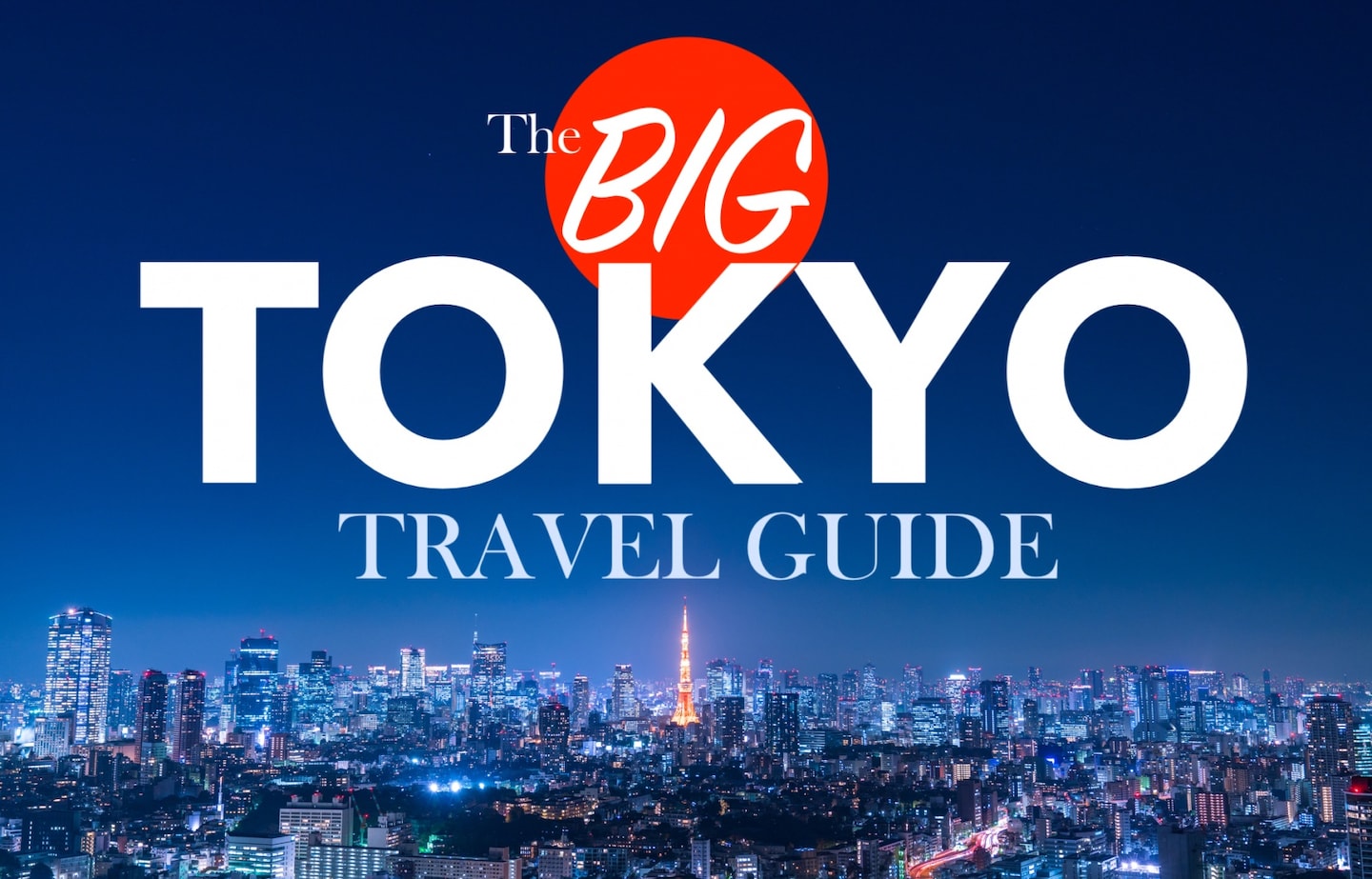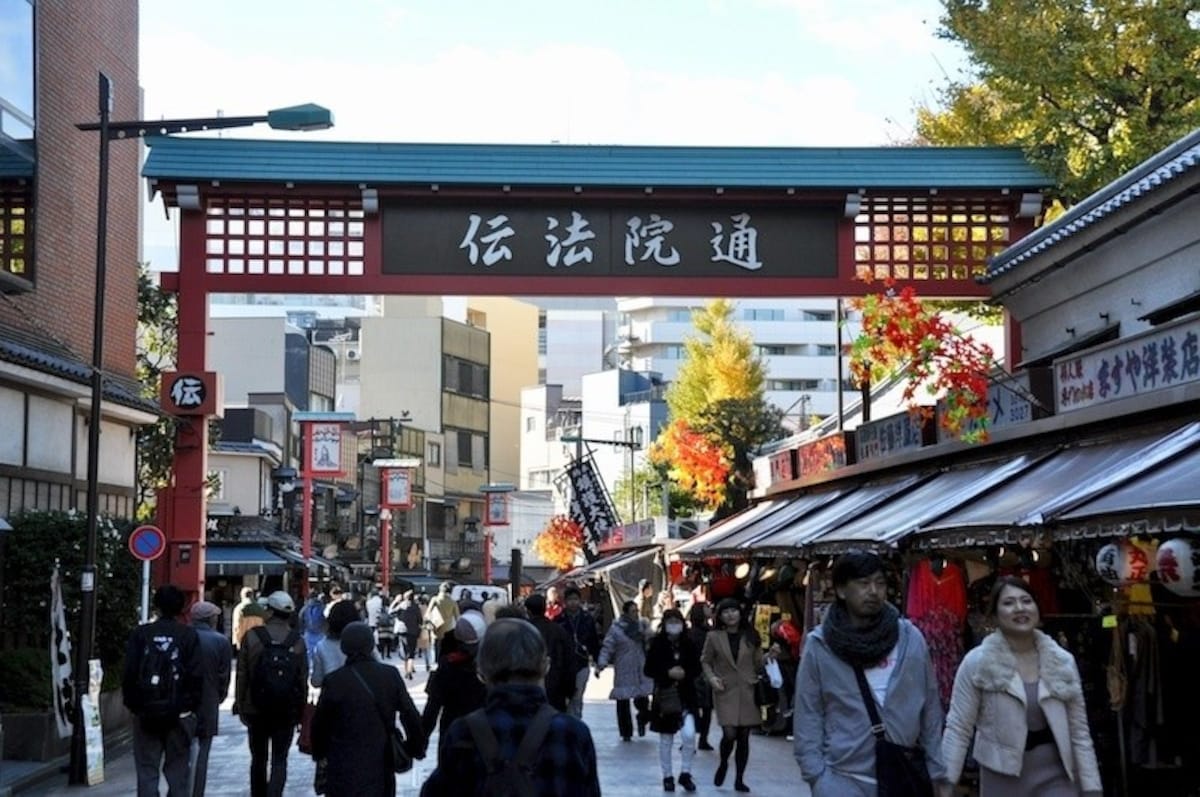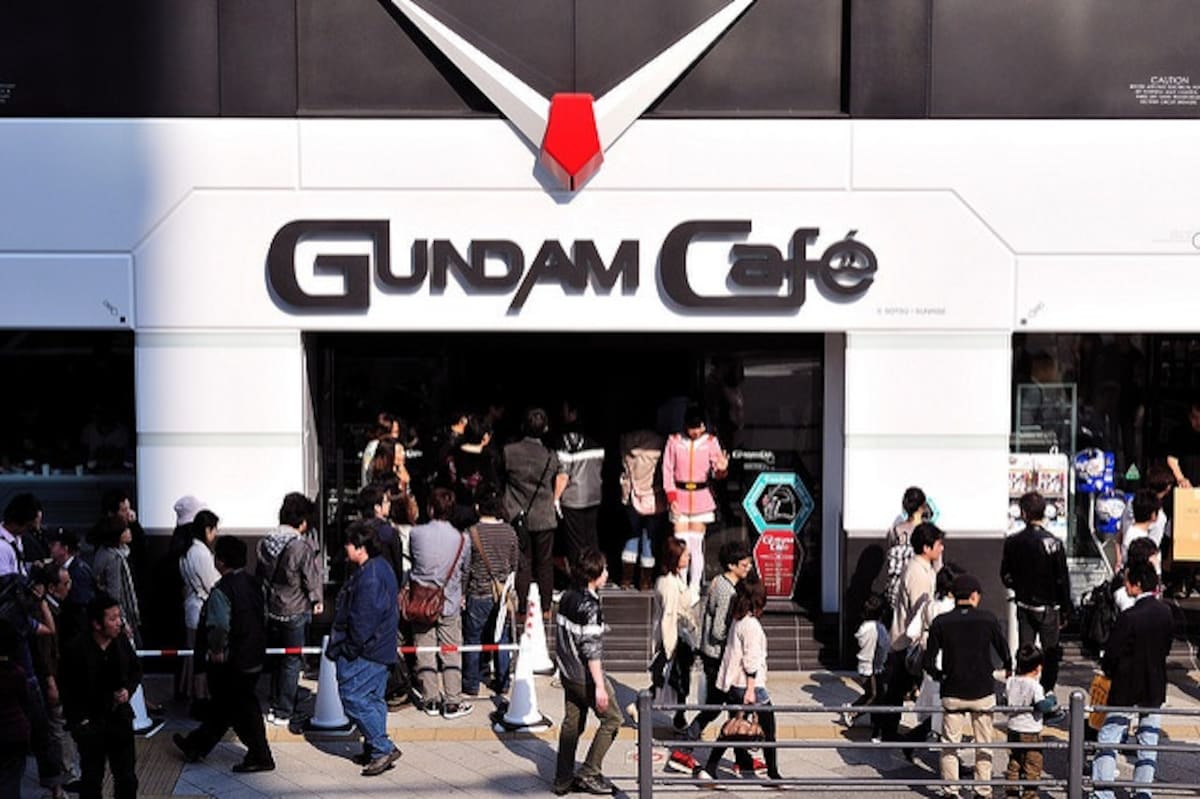The Big Tokyo Travel Guide
Tokyo is a city of old and new, where modern skyscrapers rise up from the remains of centuries-old castle walls. In this multifaceted metropolis, visitors can find the vestiges of traditional Japanese life and the latest youth culture trends. What you get out of Tokyo depends entirely on what you want to see—and we'll help you find it!
By Michael KanertKey Tokyo Facts

https://allabout-japan.com/en/article/6138/
Tokyo is both Japan’s capital city and one of its 47 prefectures. The metropolis has a population of over 13 million people, including some 500,000 foreign nationals, more than half of them from China and Korea. The nation’s economic hub, an additional 2.5 million people commute into Tokyo from the surrounding prefectures each day.
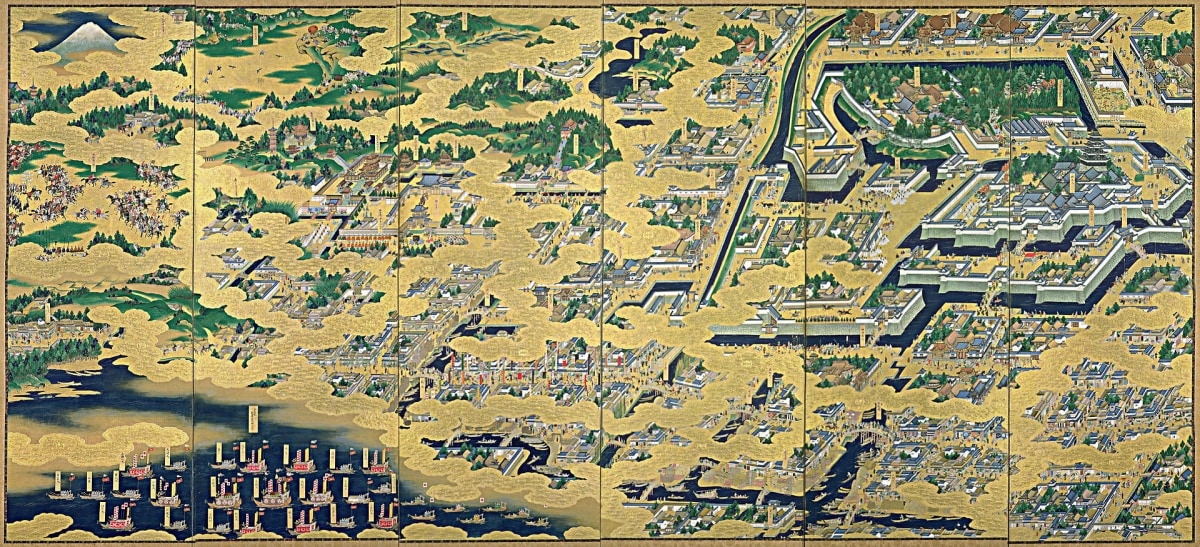
https://ja.wikipedia.org/wiki/%E6%B1%9F%E6%88%B8
Tokyo came to preeminence in 1603 when, while still named Edo (江戸), it became the central administrative city of the Tokugawa shogunate. The Tokugawa’s 264-year reign is now known as the Edo Period (江戸時代・Edo Jidai). When the shogunate ended in 1868, the nation’s capital was formally moved from Kyoto to Edo, which was renamed Tokyo, or “Eastern Capital” (東京).

https://pixta.jp/tags/%E6%96%B0%E5%AE%BF?utf8=%E2%9C%93&page=1&sell_flat=1&rows=200&keyword=%E6%96%B0%E5%AE%BF&exclude=&search_type=0&showDetailOn=true&option%5Bis_japanese%5D=&option%5Bshape%5D%5B%5D=&option%5Bmodel_release_only%5D=&option%5Bhead_count%5
Tokyo is now composed of 23 special wards, or ku (区), each of which is governed as its own city, with the overall metropolitan government based in Shinjuku-ku. The Economist's 2017 safe cities index ranked Tokyo as the safest city in the world, ahead of Singapore, Osaka and Toronto. The metropolis also boasts the most Michelin-starred restaurants of any city in the world, making it a superb spot for fine dining.
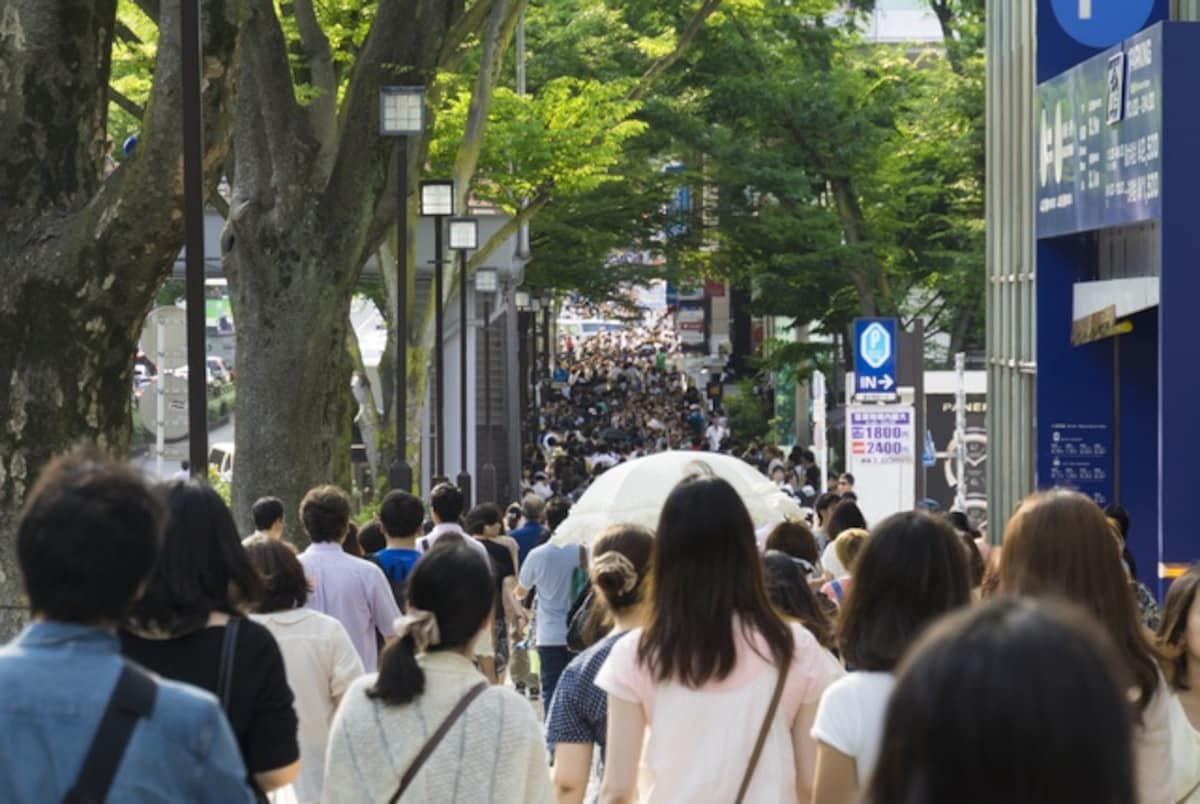
https://pixta.jp/tags/%E8%A1%A8%E5%8F%82%E9%81%93%20%E6%9D%B1%E4%BA%AC?utf8=%E2%9C%93&page=1&sell_flat=&rows=200&keyword=%E8%A1%A8%E5%8F%82%E9%81%93+%E6%9D%B1%E4%BA%AC&search_type=0
The weather in Tokyo is quite hot in the summer, rising up to an average of 29 degrees Celsius (84°F) in August. Winters are frigid but not icy, with the average high around 8 degrees Celsius (46°F) in January. The rainy season usually hits in June, while a handful of typhoons will pass through or near Tokyo between August and September. Popular times to visit are when cherry blossoms bloom across the city in late March and early April, and when the parks fill with autumn leaves in November and early December.
Top 12 Tokyo Sights
From shopping and modern entertainment to museums and ancient temples, your options for things to see and do in Tokyo are limited only by your inclinations. Here are the Top 12 major Tokyo attractions not to be missed by any traveler.
1. Asakusa (浅草)
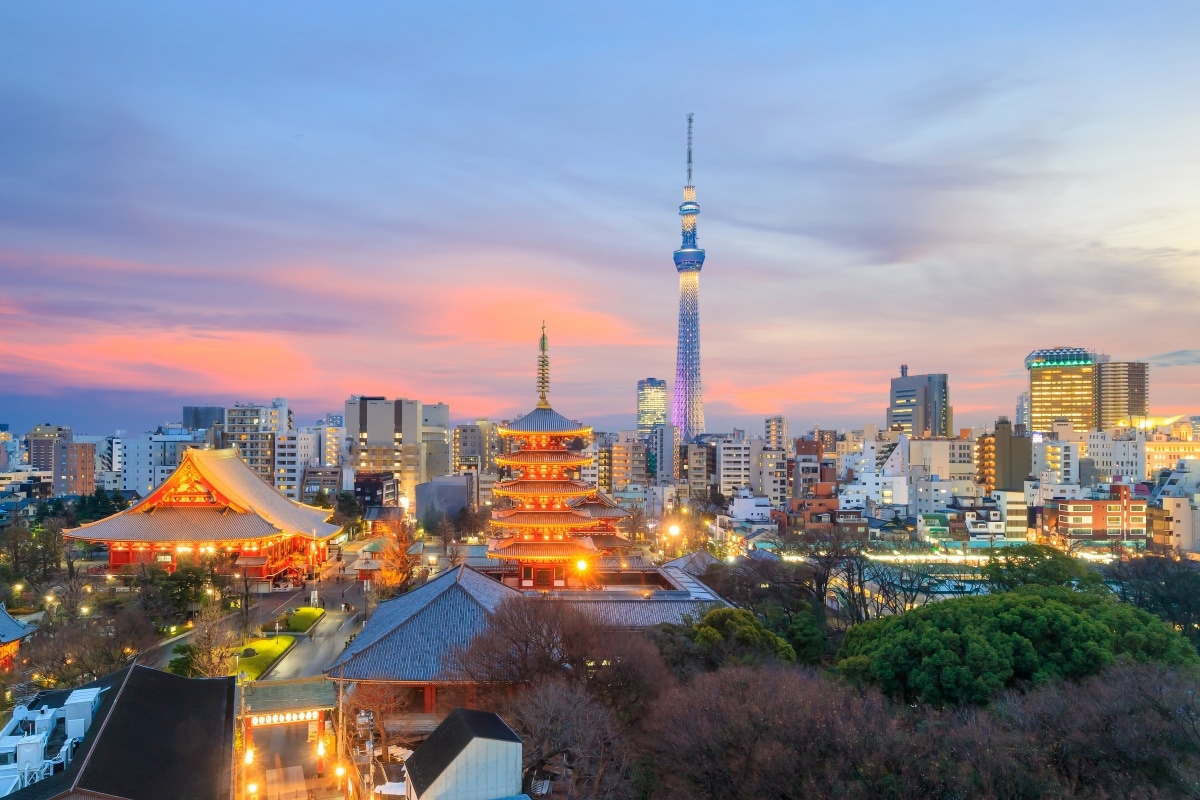
https://pixta.jp/tags/%E6%B5%85%E8%8D%89?utf8=%E2%9C%93&page=1&sell_flat=1&rows=200&keyword=%E6%B5%85%E8%8D%89&exclude=&search_type=0&showDetailOn=true&option%5Bis_japanese%5D=&option%5Bshape%5D%5B%5D=&option%5Bmodel_release_only%5D=&option%5Bhead_count%5
Located in northeastern Tokyo, the Asakusa area is centered around Senso-ji Temple (浅草寺・Senso-ji). Founded in the year 628, Senso-ji is Tokyo’s oldest temple and attracts some 30 million visitors per year. Its kanji, 淺草, can also be read as Asakusa, giving the area its name.
The temple is known for its Kaminarimon (雷門) and Hozomon (宝蔵門) gates, the Nakamise (仲見世) shopping street between the two, and its five-story pagoda (五重の塔・goju-no-to). The adjacent Asakusa Culture Tourist Information Center (浅草文化観光センター・Asakusa Bunka Kanko Center) offers tourist information and free cultural activities, as well as a lovely view from its open rooftop. The temple also hosts many festivals that can add some spice to your visit.
Senso-ji’s backstreets—including Denpoin-dori (伝法院通り), Rokku-dori (六区通り) and Hoppy-dori (ホッピー通り)—are worth a meander to get a taste of an early-20th-century entertainment district mixed with modern-day eateries. Once you’re through, Tokyo Skytree (東京スカイツリー), Japan’s tallest building, is a 20-minute walk to the southeast, while the Ryogoku Kokugikan (両国国技館), home to sumo in Tokyo, is a 30-minute walk directly south.
If you prefer a more leisurely conclusion, you can take a ferry down the Sumida River to Hama-rikyu Gardens (浜離宮恩賜庭園・Hama-rikyu Onshi Teien), which began its life as a beach pavilion for the fourth Tokugawa shogun.
Access: Take the Tokyo Metro Ginza Line or Toei Asakusa Line to Asakusa Station. Exit 1 will place you a block east of the Kaminarimon gate.
2. Shibuya (渋谷)
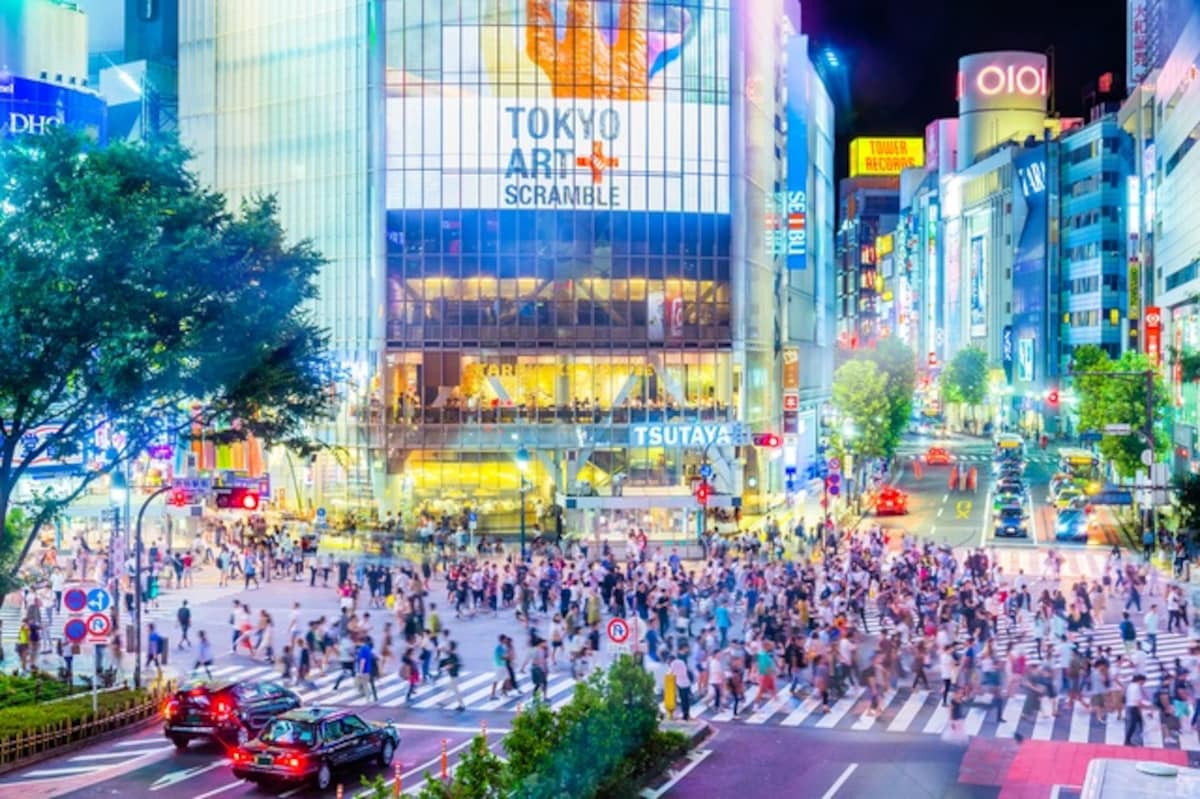
https://pixta.jp/tags/%E6%B8%8B%E8%B0%B7%20%E3%82%B9%E3%82%AF%E3%83%A9%E3%83%B3%E3%83%96%E3%83%AB?utf8=%E2%9C%93&page=1&sell_flat=1&rows=200&keyword=%E6%B8%8B%E8%B0%B7+%E3%82%B9%E3%82%AF%E3%83%A9%E3%83%B3%E3%83%96%E3%83%AB&exclude=&search_type=0&showDetai
Sitting on the western side of central Tokyo, Shibuya is the city’s youth culture and fashion mecca. Shibuya Crossing, the chaotic five-way scramble crosswalk just north of Shibuya Station, is an iconic snapshot of Tokyo, overseen by half a dozen large video screens mounted on the surrounding buildings. It’s the busiest pedestrian crossing in the world, with some 2,500 people crossing at a time.
A common meeting place near Shibuya Crossing is the Hachiko statue, which memorializes a loyal dog who waited for his master at the station for nearly 10 years after he died (you may remember a certain Richard Gere movie about it). If you’d like the classic, Lost in Translation view of the intersection, head up to the second floor of the Starbucks across the street and bide your time until you can get one of the coveted window seats.
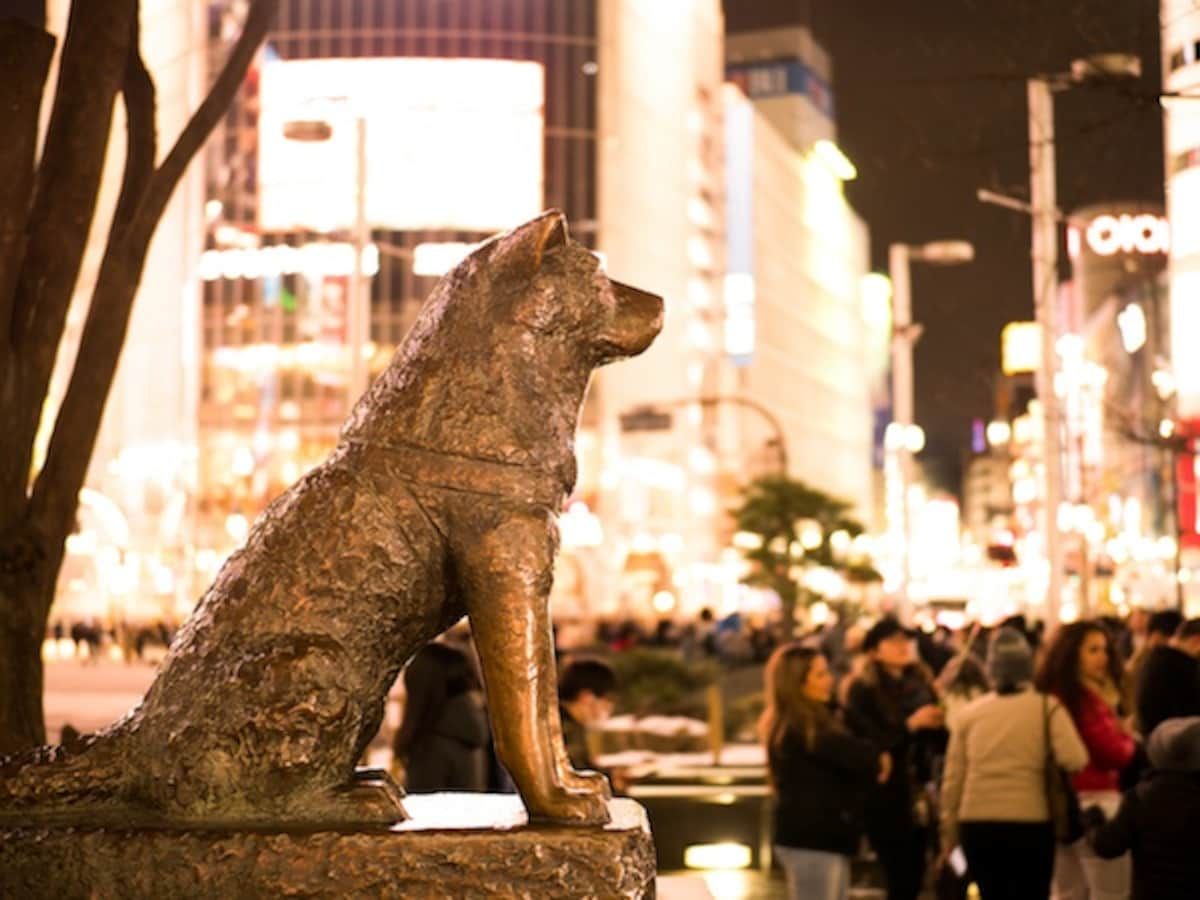
https://pixta.jp/tags/%E3%83%8F%E3%83%81%E5%85%AC?utf8=%E2%9C%93&page=1&sell_flat=1&rows=200&keyword=%E3%83%8F%E3%83%81%E5%85%AC&exclude=&search_type=0&showDetailOn=true&option%5Bis_japanese%5D=&option%5Bshape%5D%5B%5D=&option%5Bmodel_release_only%5D=&opt
There is a plentiful selection of department stores in Shibuya, but Shibuya 109 stands out as the center for young women’s fashion. Wandering further east will take you to Dogenzaka (道玄坂), a hill known for its concentration of love hotels and other under-the-radar institutions. This is also the area where you can find many of Shibuya’s clubs, the two most prominent being Womb and Sound Museum Vision, with other nearby options including Club Asia, Club Camelot, Harlem and Atom. The area is legendary for its Halloween celebrations, when the streets and clubs alike teem with costumed revelers.
Access: Shibuya Station is the second-busiest train station in the world. It’s most commonly accessed via the Yamanote Line, but you can also take the Saikyo Line, Keio Inokashira Line, and the Tokyu Den-en-toshi and Toyoko Lines, as well as the Tokyo Metro Ginza, Hanzomon and Fukutoshin Lines. Take the Hachiko Exit to emerge right in front of Shibuya Crossing.
3. Harajuku/Omotesando (原宿・表参道)
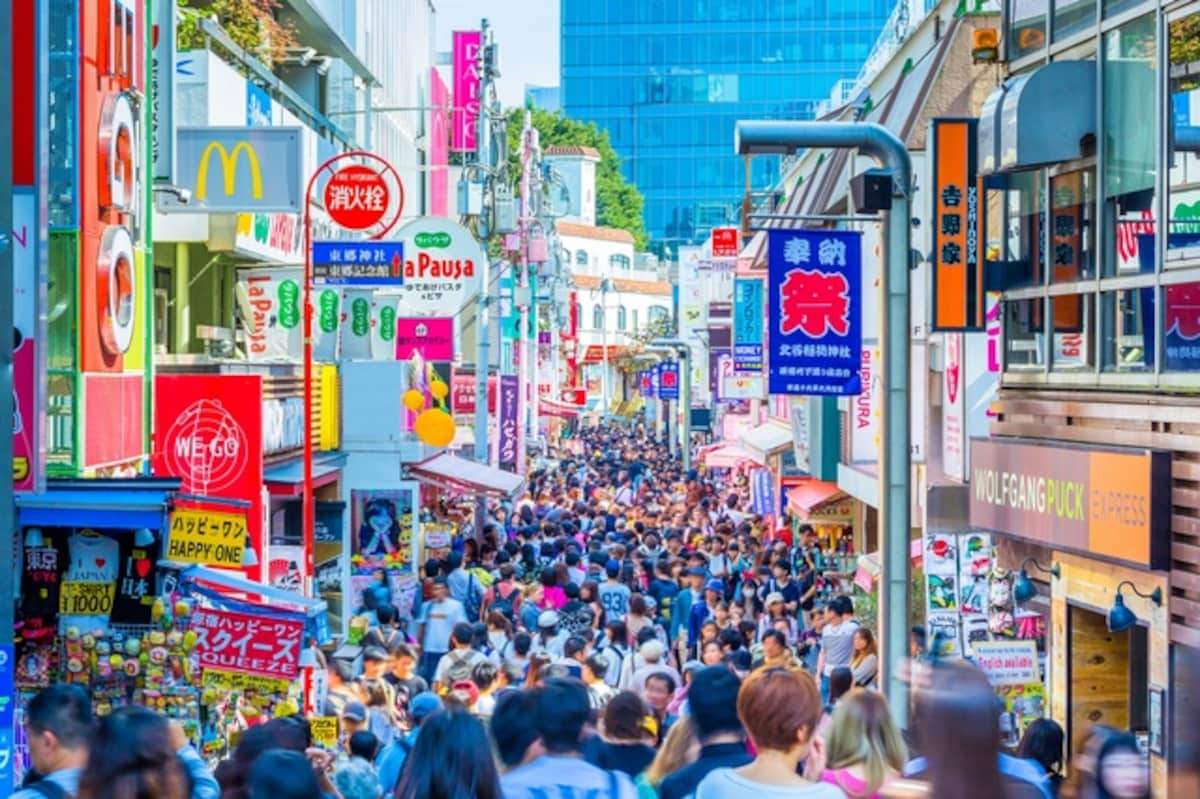
https://pixta.jp/tags/%E7%AB%B9%E4%B8%8B%E9%80%9A%E3%82%8A?utf8=%E2%9C%93&page=1&sell_flat=&rows=200&keyword=%E7%AB%B9%E4%B8%8B%E9%80%9A%E3%82%8A&search_type=0
Located just north of Shibuya, the Harajuku/Omotesando area is Tokyo’s other haven for youth culture, though of an edgier, more experimental type.
Accessible straight out of Harajuku Station, Takeshita-dori (竹下通り) is a narrow, crowded street filled with cheap alternative fashion boutiques, accessory stores, goth shops, lingerie boutiques and crepe stands.
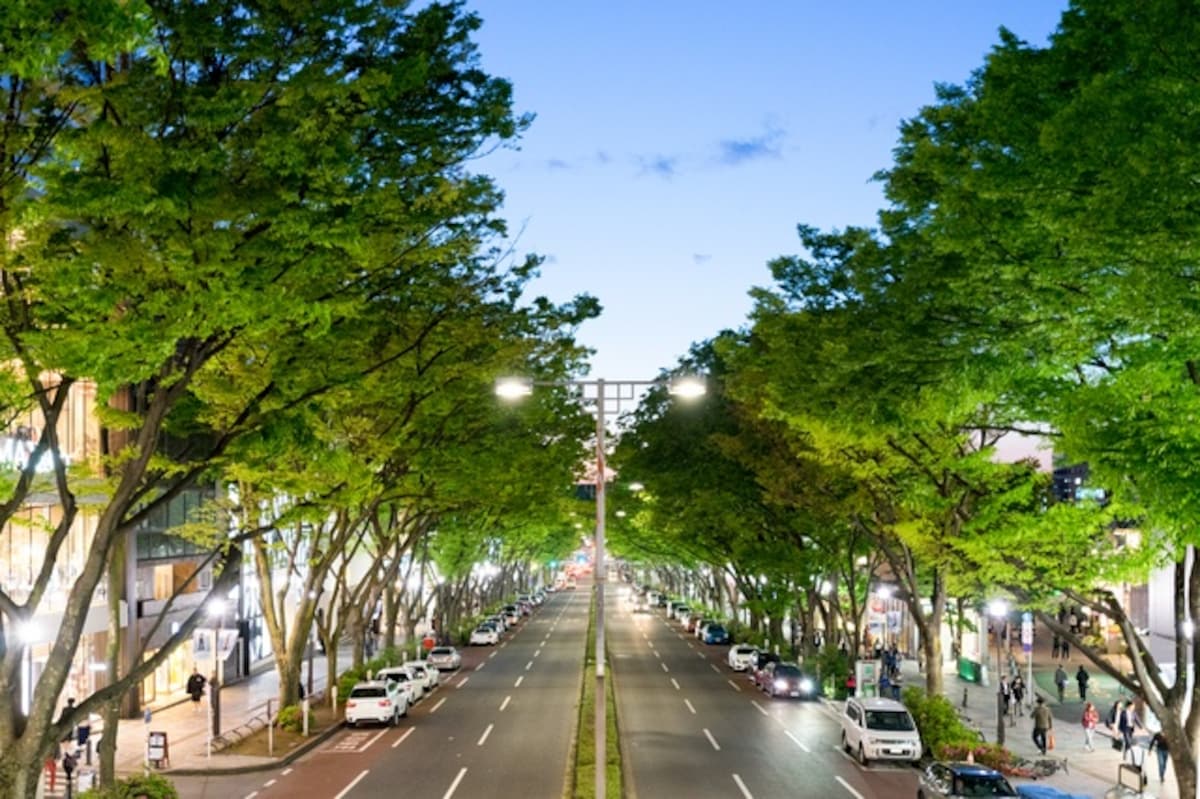
https://pixta.jp/tags/%E8%A1%A8%E5%8F%82%E9%81%93?utf8=%E2%9C%93&sell_flat=1&rows=200&keyword=%E8%A1%A8%E5%8F%82%E9%81%93&exclude=&search_type=0&showDetailOn=true&option%5Bis_japanese%5D=&option%5Bshape%5D%5B%5D=&option%5Bmodel_release_only%5D=&option%5Bh
By contrast, Omotesando, which runs parallel a few blocks to the south, is a broad, sloping, tree-lined avenue marked by high-street fashion brands like Chanel, Dior, Gucci, Prada and Louis Vuitton—as well as photographers looking to capture the latest in youth street fashion.
Not to be outdone, more typical fast-fashion brands can be found at H&M, Laforet and Tokyo Plaza Omotesando Harajuku, all located on Meiji-dori (明治通り) between Takeshita-dori and Omotesando.
Keep an eye out for chic cafés on Omotesando and its tributaries—and chocoholics should make a stop at Australian import Max Brenner near the top of the slope. Hyper-popular eateries in the area include Barbacoa Churrascaria and Hawaiian import Eggs ‘n Things, which usually has a line around the block. Meanwhile, Kiddy Land is a great place to shop for plush toys.

https://pixta.jp/tags/%E6%98%8E%E6%B2%BB%E7%A5%9E%E5%AE%AE?utf8=%E2%9C%93&page=1&sell_flat=1&rows=200&keyword=%E6%98%8E%E6%B2%BB%E7%A5%9E%E5%AE%AE&exclude=&search_type=0&showDetailOn=true&option%5Bis_japanese%5D=&option%5Bshape%5D%5B%5D=&option%5Bmodel_re
The other key attraction in the area is Meiji Shrine (明治神宮・Meiji Jingu), which can be found just west of Harajuku Station. It forms a forested oasis in the middle of the city, with the shrine hidden in the center. Dedicated to Emperor Meiji (1852-1912), the shrine hosts a number of rare performances of traditional arts on April 29, May 2 and May 3 each year.
Access: Harajuku Station is located north of Shibuya on the Yamanote Line. It’s adjacent to Meiji-jingumae Station on the Tokyo Metro Chiyoda and Fukutoshin Lines, while Omotesando Station, at the top of the slope, is on the Tokyo Metro Chiyoda, Hanzomon and Ginza Lines.
One of the nicest ways to get to the area is to wander up Cat Street (キャットストリート), a quaint, meandering avenue lined with fashionable shops between Harajuku/Omotesando and Shibuya. It’s about a 15-minute walk from Shibuya Station to Omotesando.
4. Akihabara (秋葉原)
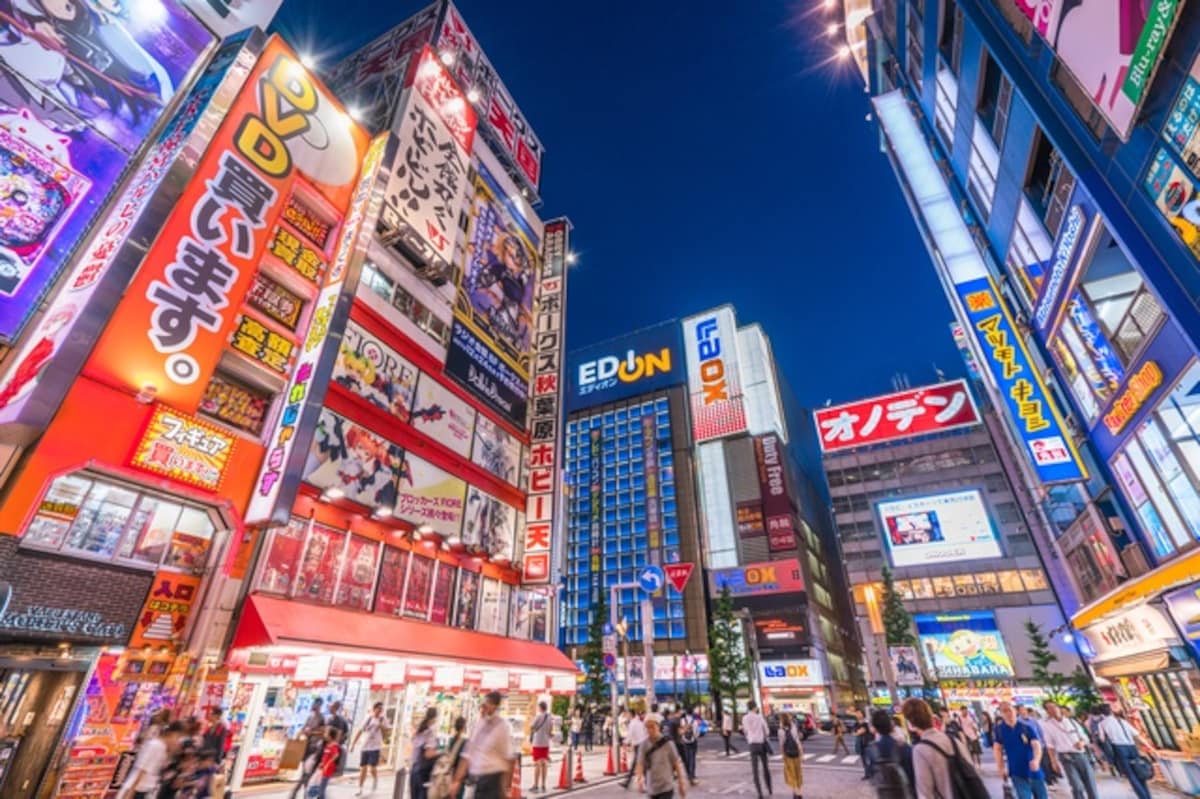
https://pixta.jp/tags/%E7%A7%8B%E8%91%89%E5%8E%9F?utf8=%E2%9C%93&sell_flat=1&rows=200&keyword=%E7%A7%8B%E8%91%89%E5%8E%9F&exclude=&search_type=0&showDetailOn=true&option%5Bis_japanese%5D=&option%5Bshape%5D%5B%5D=&option%5Bmodel_release_only%5D=&option%5Bh
Akihabara, known locally as “Akiba,” is otaku paradise. Once famed for its electronic shops, this area in northeastern Tokyo is now just as renowned for anime paraphernalia, figurine stores, gaming shops and maid cafés.
For toys and figurines, you can't go wrong with Akihabara Radio Kaikan (秋葉原ラジオ会館・Akihabara Rajio Kaikan), a nine-story collection of dozens of anime-related shops just outside Akihabara Station’s Electric Town Exit. Gamers (ゲーマーズ) is right across the street, while Liberty No. 2 (リバティー秋葉原2号店・Liberty Akihabara Ni-go-ten) is around back on the other side of the block—and if you head up the street and turn right down Chuo-dori (中央通り) you’ll find six more Liberty branches scattered on both sides of the street, offering games, figurines and model cars depending on the branch.
Animate (アニメイト) is also found on Chuo-dori, presenting extensive anime paraphernalia as well as manga art supplies. Head one block west, parallel to Chuo-dori, and you’ll find Mandarake (まんだらけ), another toy and figurine chain, as well as otaku craft chain Kotobukiya (壽屋) and retro gaming mecca Super Potato (スーパーポテト), the latter filled with games and systems dating back to the original Nintendo Entertainment System. This is also the area to find a number of maid cafés, where you can enjoy some very basic food with over-the-top cutesy service.
Back toward the station, you can find the Gundam Café (ガンダムカフェ) just north of the Electric Town Exit, which is also next door to the AKB48 Café & Shop. If you’d like to see more of the AKB idol group, their theater is located back on Chuo-dori on the eighth floor of Don Quijote (ドンキホーテ), itself a great shopping spot for cheap and quirky apparel, toys and knick knacks, and home to a maid café on the fifth floor.
Amid all this otaku madness, Akihabara is still a hub for consumer electronics, with the massive, nine-story Yodobashi-Akiba (ヨドバシAkiba) located right outside Akihabara Station’s Showa-dori exit. For more variety, take the Electric Town Exit and head straight to Chuo-dori, where you’ll find multi-story chain shops alongside little holes in the wall selling random electronic components. Laox (ラオックス) is the big name in duty-free shopping, while other major chains in the area include Labi (found right outside the Electric Town Exit), as well as Sofmap (ソフマップ), Bic Camera (ビックカメラ) and Ishimaru (石丸電気・Ishimaru Denki).
Access: Take the JR Yamanote Line, Chuo-Sobu Line, Keihin-Tohoku Line or Tokyo Metro Hibiya Line to Akihabara Station. Take either the Akihabara Electric Town Exit, or the Showa Dori Exit if you’re heading to Yodobashi-Akiba.
5. Tokyo Imperial Palace (皇居・Kokyo)
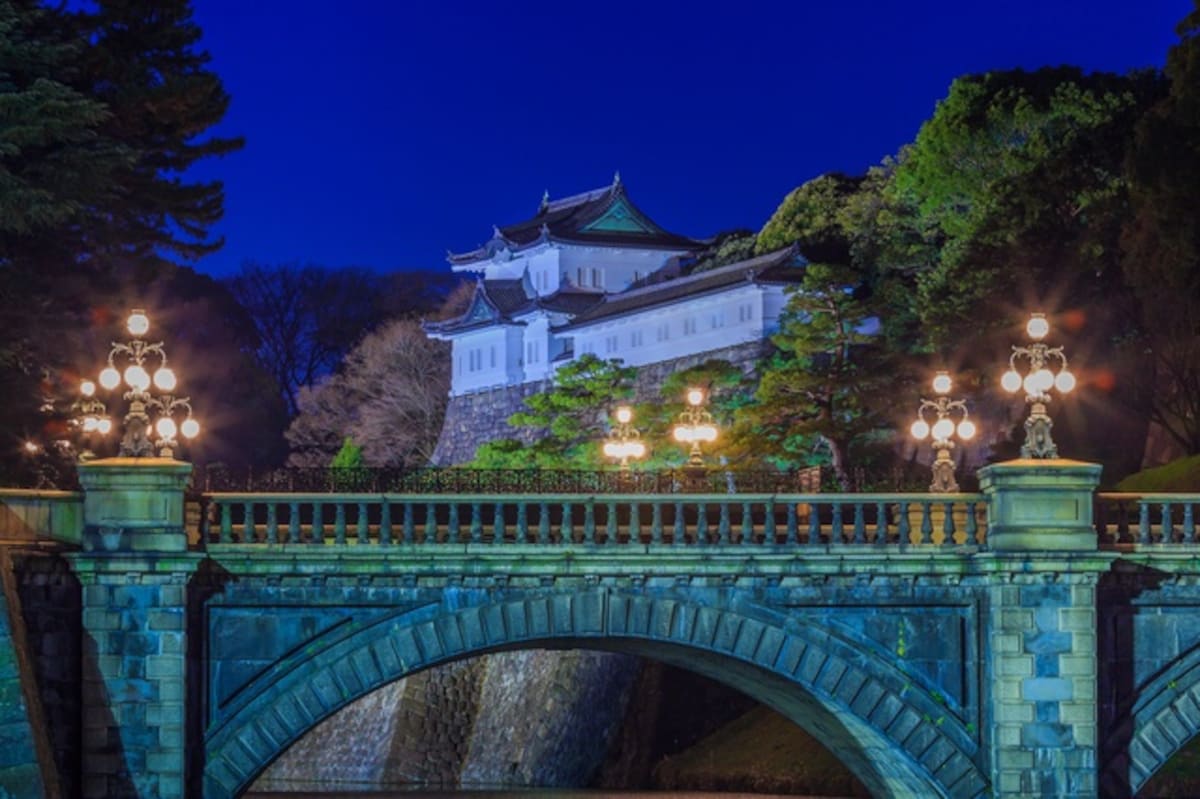
https://pixta.jp/tags/%E7%9A%87%E5%B1%85?utf8=%E2%9C%93&sell_flat=1&rows=200&keyword=%E7%9A%87%E5%B1%85&exclude=&search_type=0&showDetailOn=true&option%5Bis_japanese%5D=&option%5Bshape%5D%5B%5D=&option%5Bmodel_release_only%5D=&option%5Bhead_count%5D=&opti
The Tokyo Imperial Palace is located on the former site of Edo Castle, the center of power for the Tokugawa shogunate. Occupying a vast, 115-hectare (284-acre) area in the center of the city, the palace seems to suck the sky downward among the surrounding skyscrapers.
While only a handful of wooden structures from the original Edo Castle remain, the huge blocks of its massive stone walls still tower impressively over the Imperial Palace East Garden (皇居東御苑・Kokyo Higashi Gyoen) and Kitanomaru Garden (北の丸公園・Kitanomaru Koen), the only areas that are free to access. The palace itself, where the imperial family still resides, is closed to the public, and special reservations are required if you’d like to visit the area around the palace. The only other way to get closer is to join the throngs hoping to catch the emperor’s appearance on his birthday on December 23 and his New Year's address on January 2 each year.

https://pixta.jp/tags/%E5%8D%83%E9%B3%A5%E3%83%B6%E6%B7%B5?utf8=%E2%9C%93&page=1&sell_flat=1&rows=200&keyword=%E5%8D%83%E9%B3%A5%E3%83%B6%E6%B7%B5+&exclude=&search_type=0&showDetailOn=true&option%5Bis_japanese%5D=&option%5Bshape%5D%5B%5D=&option%5Bmodel_r
In late March, a 700-meter (766-yd) stretch of the moat known as Chidori-ga-fuchi Ryokudo (千鳥ヶ淵緑道) is one of the city's most famous cherry blossom spots, which are even illuminated at night. The moat is almost exactly 5 kilometers (3 mi) in circumference, making the palace a popular jogging circuit throughout the year as well.
Access: The Imperial Palace is 10 minutes’ walk west of Tokyo Station, or just 2 minutes from Otemachi subway station. Chidori-ga-fuchi is about 10 minutes east of Hanzomon subway station or 5 minutes southwest of Kudanshita subway station.
• State Guest House
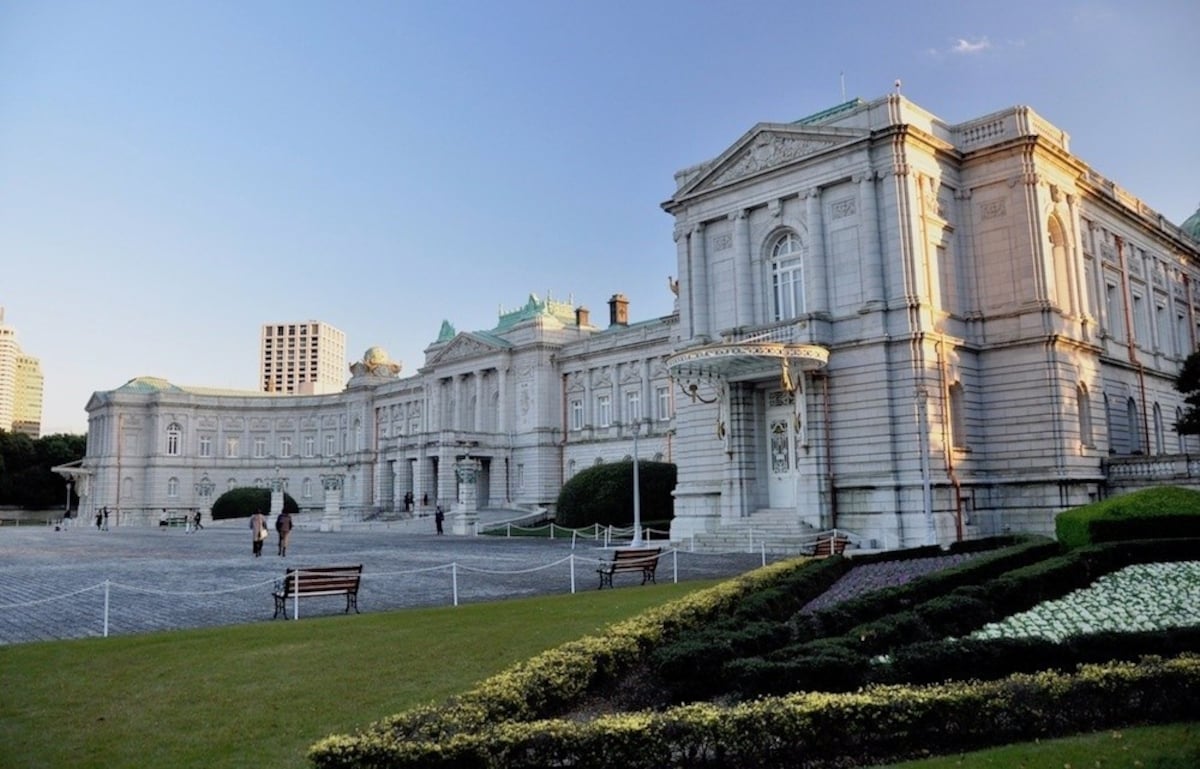
https://allabout-japan.com/en/article/6150/
If you’d like to see a little more imperial grandeur, try visiting the State Guest House (迎賓館・Geihinkan), also known as the Akasaka Palace (赤坂離宮・Akasaka Rikyu). Built in 1909, it takes inspiration from palaces such as Buckingham, Schönbrunn, and Versailles, combining European and Japanese motifs to create a unique form of East-meets-West opulence.
The State Guest House is open most days when dignitaries are not present. The garden is free, while the main building hosts a limited number of guests daily—if you’d like to make sure you get in, advance applications are available here.
Access: The State Guest House is about 10 minutes’ walk south of Yotsuya Station on the Chuo-Sobu Line or the Marunouchi and Namboku subway lines. You can get there on foot in about 30 minutes from the west side of the Imperial Palace.
6. Tsukiji Market (築地市場)
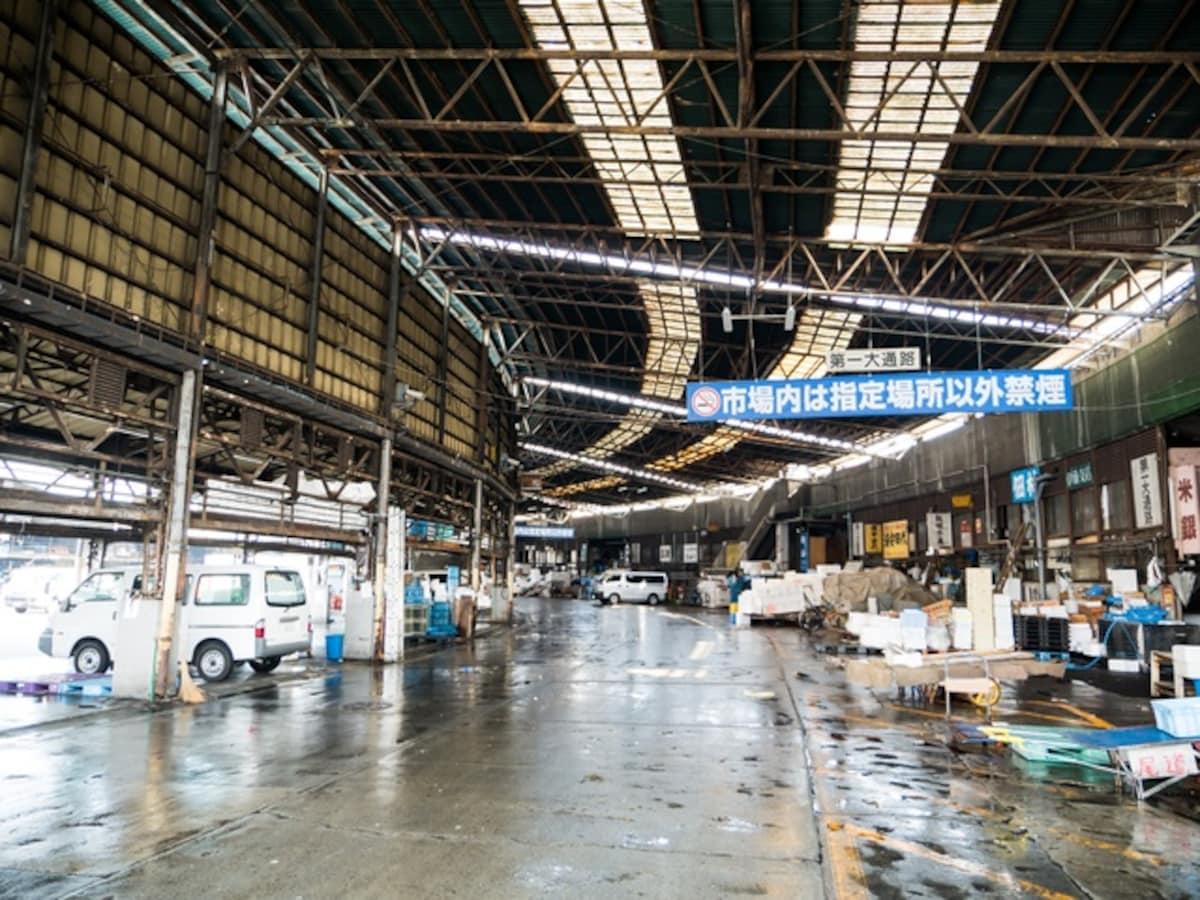
https://pixta.jp/tags/%E7%AF%89%E5%9C%B0%E5%B8%82%E5%A0%B4?utf8=%E2%9C%93&sell_flat=1&rows=200&keyword=%E7%AF%89%E5%9C%B0%E5%B8%82%E5%A0%B4&exclude=&search_type=0&showDetailOn=true&option%5Bis_japanese%5D=&option%5Bshape%5D%5B%5D=&option%5Bmodel_release_o
Located on Tokyo Bay, Tsukiji Market (築地市場・Tsukiji Shijo) is the world’s largest fish market in terms of volume handled and produced, with over 1,779 tons and ¥1.55 billion worth of seafood going through it each day.
Only 120 tourists are allowed into the famed morning tuna auction, and must apply for access on a first-come, first-served basis at the Fish Information Center (おさかな普及センター・Osakana Fukyu Center) near the Kachidoki Gate. It opens at 5 a.m., but people start lining up earlier.
Flash photography is prohibited inside, and you must observe from the designated area only, as this is a fully functioning commercial fish market and not a tourist site. The wholesale area is only accessible from 11 a.m., once the day’s most intense business is done. Even once allowed in, you have to be careful not to get in the way of the serious work going on around you.
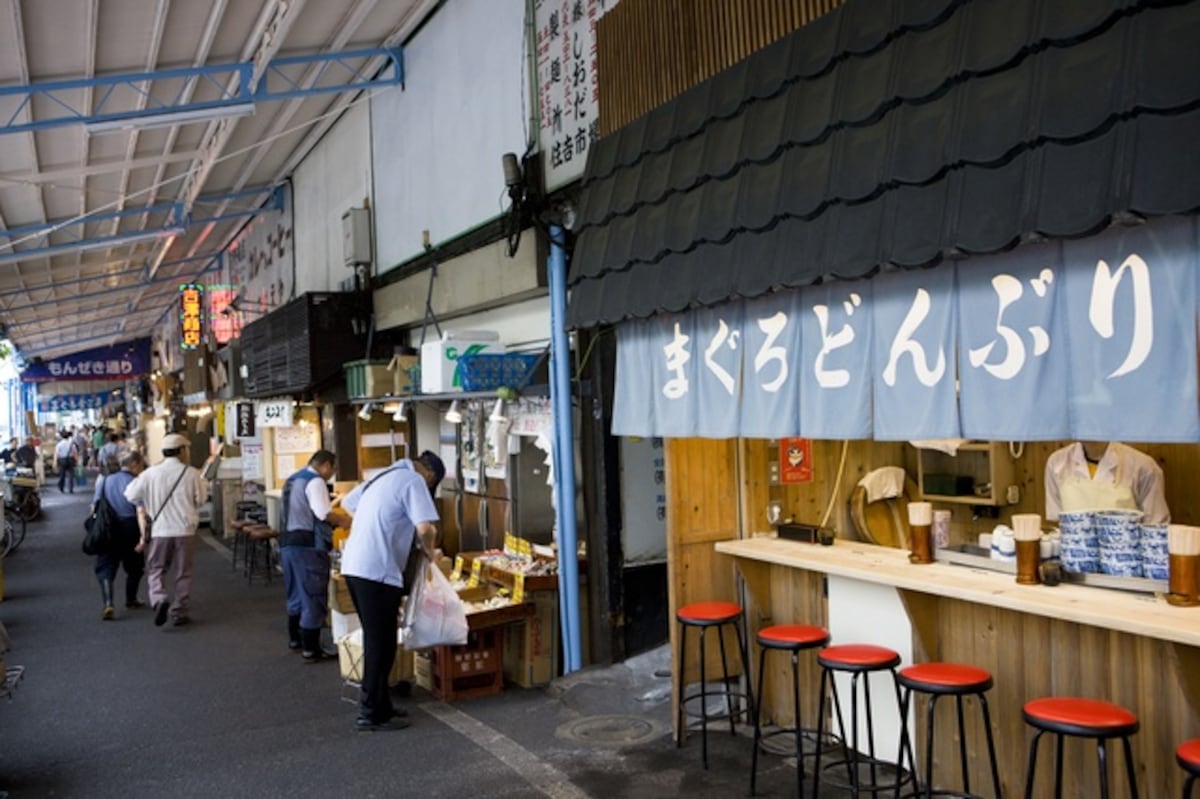
https://pixta.jp/tags/%E7%AF%89%E5%9C%B0%E5%B8%82%E5%A0%B4?utf8=%E2%9C%93&sell_flat=1&rows=200&keyword=%E7%AF%89%E5%9C%B0%E5%B8%82%E5%A0%B4&exclude=&search_type=0&showDetailOn=true&option%5Bis_japanese%5D=&option%5Bshape%5D%5B%5D=&option%5Bmodel_release_o
You’ll want to combine a visit with fresh sushi at one of the restaurants in the inner or outer market areas. The restaurants are typically open from 5 a.m. to a little after noon.
Important: Please note that the fish market will be moving from its current location to Toyosu as of October 6, 2018.
Access: The fish market is directly accessible from Tsukiji Shijo Station on the Toei Oedo subway line, and is a 5-minute walk south of Tsukiji Station on the Hibiya subway line. However, the earliest trains will only get you there after 5 a.m., so you’ll likely want to take an early taxi.
7. Tokyo Museums
If you’re in the mood for something indoors during your Tokyo travels, the city offers a number of stunning museums that can easily occupy hours of your time.
• Tokyo National Museum
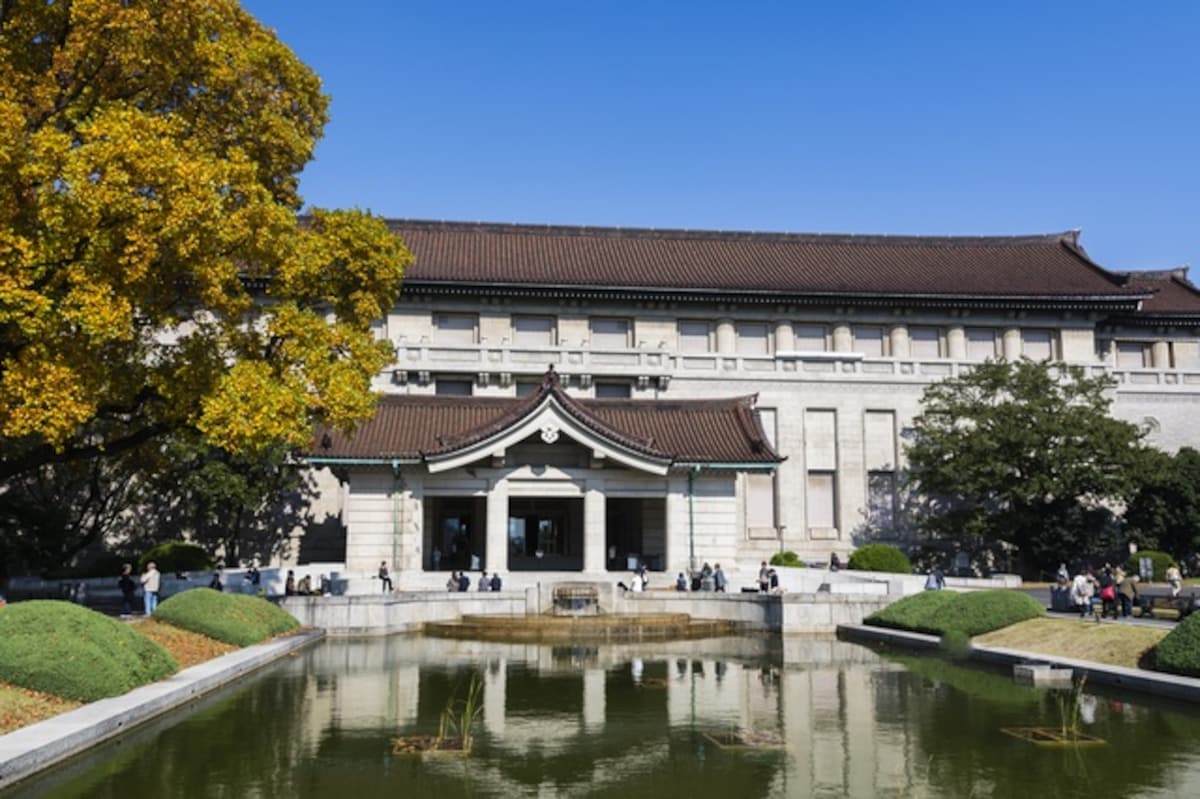
https://pixta.jp/tags/%E6%9D%B1%E4%BA%AC%E5%9B%BD%E7%AB%8B%E5%8D%9A%E7%89%A9%E9%A4%A8?utf8=%E2%9C%93&page=1&sell_flat=1&rows=200&keyword=%E6%9D%B1%E4%BA%AC%E5%9B%BD%E7%AB%8B%E5%8D%9A%E7%89%A9%E9%A4%A8&exclude=&search_type=0&showDetailOn=true&option%5Bis_j
The Tokyo National Museum (東京国立博物館・Tokyo Kokuritsu Hakubutsukan) holds a vast collection of over 110,000 pieces of Japanese art and antiquities, from ancient pottery and sculpture to swords, woodblock prints and more. Found in northeastern Tokyo, the museum is located in Ueno Park (上野恩賜公園・Ueno Onshi Koen), which is also home to the National Museum of Western Art (国立西洋美術館・Kokuritsu Seiyo Bijutsukan), the Tokyo Metropolitan Art Museum (東京都美術館・Tokyo-to Bijutsukan), the National Museum of Science and Nature (国立科学博物館・Kokuritsu Kagaku Hakubutsukan), and Ueno Zoological Gardens (上野動物園・Ueno Dobutsu-en), Japan’s first zoo, which opened in 1882 and is now famous for its giant pandas.
Access: Ueno Park and its museums can be accessed on foot within 5 to 10 minutes from Ueno Station on the JR Yamanote Line or Keihin-Tohoku Line. The area is also a prime spot for cherry blossom viewing in the spring.
• Edo-Tokyo Museum
https://www.youtube.com/watch?time_continue=112&v=YelPngm70a4
The Edo-Tokyo Museum (江戸東京博物館・ Edo Tokyo Hakubutsukan) is located right next to the Ryogoku Kokugikan sumo venue on Tokyo’s east end. Here you’ll find a life-sized replica of the Nihonbashi bridge, as well as reproductions of period buildings and scale models of cityscapes from the Edo Period (1603-1868) to the Showa Period (1926-1989).
Access: The Edo-Tokyo Museum is accessible in 5 minutes' walk from Ryogoku Station on the JR Chuo-Sobu Line and the Toei Oedo subway line.
• Ghibli Museum, Mitaka
https://www.youtube.com/watch?v=yvkE6Nq8Pc8
A celebration of the works of master animator Hayao Miyazaki and his Studio Ghibli, the Ghibli Museum (三鷹の森ジブリ美術館・Mitaka no Mori Ghibli Bijutsukan) is hard to get into, particularly on a holiday. If you want to visit this compact, adorable indulgence in everything from Ponyo to Totoro, you have to book months in advance.
If you order from overseas, tickets are available up to four months in advance through JTB, or one month in advance via Lawson Ticket. Inside Japan, you can reserve your spot using a Loppi ticket machine at a Lawson convenience store.
Access: Located west of central Tokyo, the Ghibli Museum is a 15-minute walk south from Mitaka Station or Kichijoji Station on the JR Chuo Line or Chuo-Sobu Line. Buses are also available from each station.
8. Tokyo City Views
Tokyo is a spectacular city to see from a height. However, while Tokyo Tower (東京タワー) and Tokyo Skytree might seem to be the automatic destinations, neither actually affords that great a view.
• Mori Tower

https://pixta.jp/tags/%E6%A3%AE%E3%82%BF%E3%83%AF%E3%83%BC%E9%A2%A8%E6%99%AF?utf8=%E2%9C%93&page=1&sell_flat=1&rows=200&keyword=%E6%A3%AE%E3%82%BF%E3%83%AF%E3%83%BC%E9%A2%A8%E6%99%AF&exclude=&search_type=0&showDetailOn=true&option%5Bis_japanese%5D=&option
Tokyo Tower is better for looking at than seeing from, and you can get the best view from Roppongi Hills Mori Tower (六本木ヒルズ森タワー). There’s no way to get to the 52nd-floor observation deck or rooftop Sky Deck without paying admission for the Mori Art Museum (森美術館・Mori Bijutsukan), so it’s best to take a look at the museum while you’re in the building (the exhibits are usually quite good).
Access: Mori Tower is located in central Tokyo, about a 5-minute walk southeast of Roppongi Station on the Hibiya and Toei Oedo subway lines.
• Tokyo Metropolitan Government Building
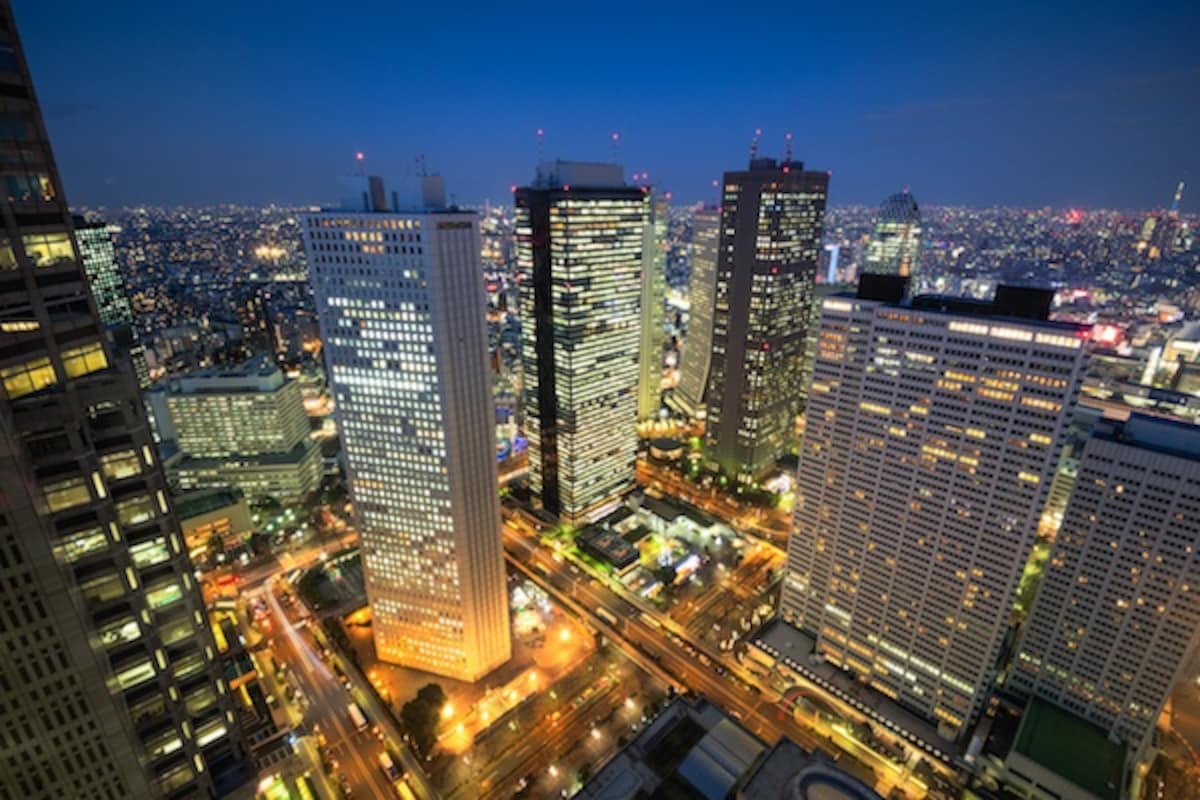
https://pixta.jp/tags/%E6%9D%B1%E4%BA%AC%E9%83%BD%E5%BA%81%E8%88%8E%20%E9%A2%A8%E6%99%AF%E3%80%80%E5%A4%9C?utf8=%E2%9C%93&page=1&sell_flat=1&rows=200&keyword=%E6%9D%B1%E4%BA%AC%E9%83%BD%E5%BA%81%E8%88%8E+%E9%A2%A8%E6%99%AF%E3%80%80%E5%A4%9C&exclude=&searc
If you’d like a cheaper view of the city, head to the 45th floor of the Tokyo Metropolitan Government Building (東京都庁舎・Tokyo-to Chosha), located in Shinjuku on the west side of central Tokyo. Access is completely free, and it’s usually not too crowded. The view is particularly spectacular at night.
Access: While the government building is closest to Tochomae subway station on the Toei Oedo Line, if you’re coming from Shinjuku Station, you’re probably better off just walking the 10 minutes or so due east (unless you’re already on the subway—the transfer to the Toei Oedo Line is far).
There are also several hotels in the city that offer particularly stunning views, such as the The Prince Park Tower Tokyo or the famous Park Hyatt Tokyo.
9. Tokyo Theme Parks
If you'd like to add a little more magic to your experience, there are a handful of unique theme parks you might want to visit during your Tokyo travels.
• Tokyo Disney Theme Parks
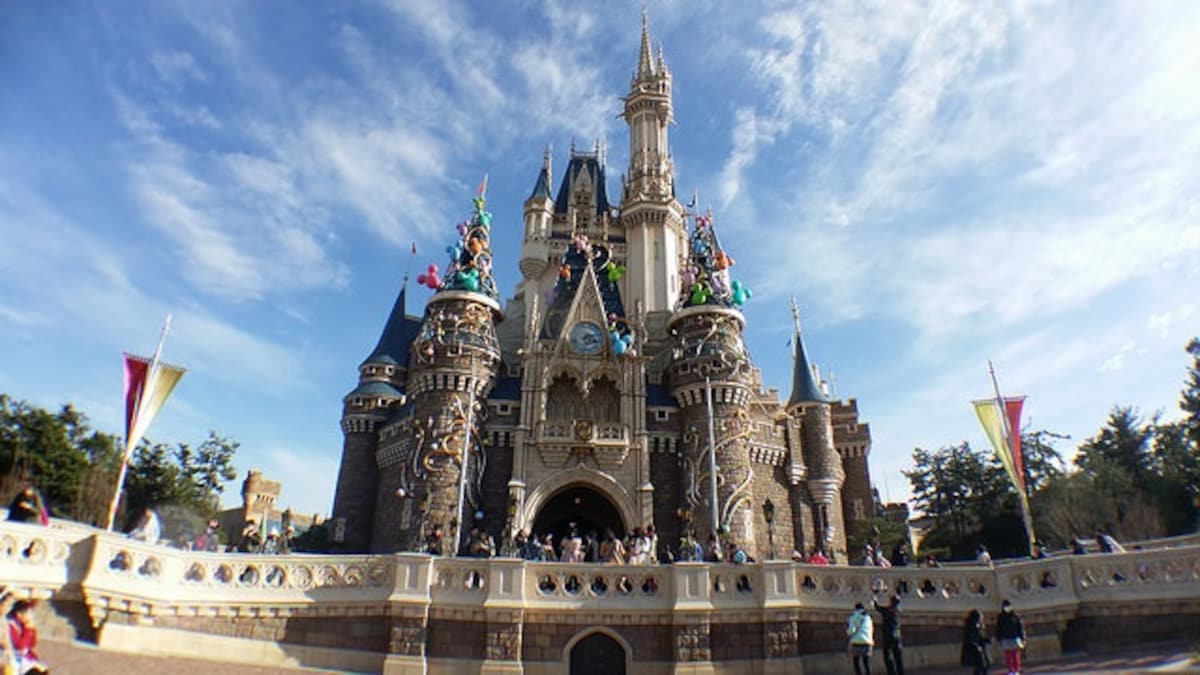
https://www.flickr.com/photos/130032718@N04/15704908333/in/photolist-55VaRD-pVML6B-9Hh3Dt-fajR9L-9Hh2Ba-fa5BtX-fa5Bic-adSkB2-adVamd-9HjTXo-55Vc74-bQtfAF-bQtfNv-fa5Bx6-bByvYh-bByBKU-9HjXdQ-55ZzsE-bQtesc-55YUKw-9HjTpQ-UNqwNY-cbYLYj-55YUmW-bQtd9B-qA1uyh-9Hhf
If you’re looking for theme parks in the Tokyo area, you can’t go wrong with Tokyo Disneyland (東京ディズニーランド) or Tokyo DisneySea (東京ディズニーシー), the top two theme parks in Japan. DisneySea is the slightly more mature of the two, with alcoholic drinks for sale and a more compact, Mediterranean feel. Tickets can be purchased online; be sure to make strategic use of the Fastpass system to manage the epic wait times.
Access: Located just over the border in Chiba Prefecture, both parks are accessible from Maihama Station on the Keiyo Line or Musashino Line, both of which connect directly to Tokyo Station.
• Sanrio Puroland
https://www.youtube.com/watch?v=Efpq4_Djt6o
Aimed more at small children, Sanrio Puroland (サンリオピューロランド) is an indoor theme park based around Sanrio characters such as Hello Kitty and Gudetama. Beyond the cutesy rides, Sanrio fans can find themed dining and lots of merchandise.
Access: Located west of central Tokyo, the park is accessible from Tama-Center Station, which is serviced by the Keiyo Sagamihara Line, the Odakyu Tama Line and the Tama Toshi Monorail. Both the Keiyo Line and Odakyu Line running out of Shinjuku Station connect up to Tama-Center.
10. Tokyo Festivals
A festival should be a feature of any visit to Japan. Tokyo’s most lavish festivals, or matsuri (祭り), take place between May and August, but there are many more to be found throughout the year. Get ready for drinking, dancing, drumming, street food and plenty of crowds!
• Kurayami Matsuri ('Darkness Festival')
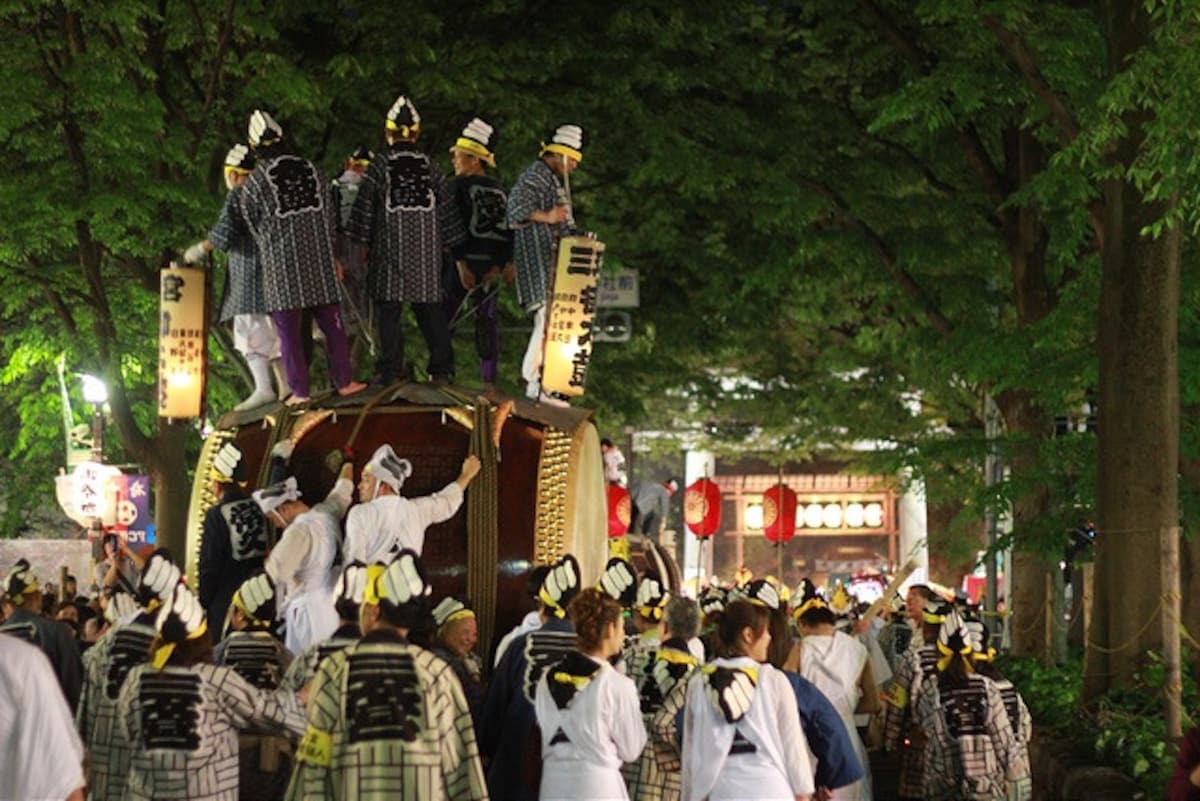
https://www.flickr.com/photos/got_got/6998764130/in/photolist-bEsuK5-bEsvh5-bEss9w-bTn9ee-N7gJn-N77Mh-N77a5-bTnae8-N7g36-bTn9Y8-N7htK-N7igt-bEsv8m-N78HW-N7hE2-N7hT6-N78RA-N78zQ-N76NW-N78ZW-N7h9D-N7rWa-N76J1-N7hGr-N7j6q-N7gap-N7gdz-N7gDg-N7jcs-N76Ew-N7hQg-
The Kurayami Matsuri (くらやみ祭り) in Fuchu City runs from April 30 to May 6 each year. The highlight comes on the evening of May 5, when eight mikoshi portable shrines emerge from Okunitama Shrine (大國魂神社・Okunitama Jinja) accompanied by the beat of some of Japan's biggest taiko drums.
• Kanda Matsuri
https://www.youtube.com/watch?v=uUsYj7uuLMU
The Kanda Matsuri (神田祭・Kanda Matsuri) is counted among Japan’s Three Great Festivals. It’s only held on odd-numbered years, while its (smaller) sister festival, the Sanno Matsuri, is held on even-numbered years. Based around Kanda Myojin Shrine (神田明神・Kanda Myojin) in eastern Tokyo, it takes place on the week leading up to the Saturday and Sunday closest to May 15.
The highlights are the massive processions on Saturday and Sunday, with the Saturday afternoon procession best known for its mounted samurai, festival floats, musicians and dancers, while the Sunday procession features numerous portable shrines (mikoshi) from the surrounding neighborhoods.
Access: Kanda Myojin Shrine is about 5 minutes’ walk northeast of Ochanomizu Station on the Chuo-Sobu Line. The processions rove through the city streets between the shrine, the Imperial Palace and the Sumida River.
• Sanno Matsuri
https://www.youtube.com/watch?v=rwgmKbZboSw
The Sanno Matsuri (山王祭) is held from June 7 to 17 on even-numbered years. It’s based out of Hie Shrine (日枝神社・Hie Jinja) in central Tokyo, with the highlight being the Shinkosai (神幸祭, also read "Jinkosai") procession on the first Friday, featuring traditional costumes and portable shrines.
Access: Hie Shrine is 5 minutes’ walk northeast of Tameike-Sanno Station on the Tokyo Metro Ginza and Namboku subway lines. The procession meanders through the vast area of streets south of the Imperial Palace between Nihonbashi Station and Yotsuya Station.
• Sanja Matsuri
https://www.youtube.com/watch?v=RyCWw9ZgSaU
The Sanja Matsuri (三社祭) is based around Asakusa Shrine (浅草神社・Asakusa-jinja), which is on the grounds of Senso-ji Temple. One of Tokyo’s biggest festivals, it takes place on the third full weekend in May, with the highlights being the Friday parade, known for its floats carrying dancers and taiko drummers, and the appearance of the shrine’s three mikoshi (portable shrines), which are paraded through the streets of Asakusa on the final Sunday.
Access: Take the Tokyo Metro Ginza Line or Toei Asakusa Line to Asakusa Station. Exit 1 will place you a block east of Senso-ji’s Kaminarimon gate.
• Mitama Matsuri
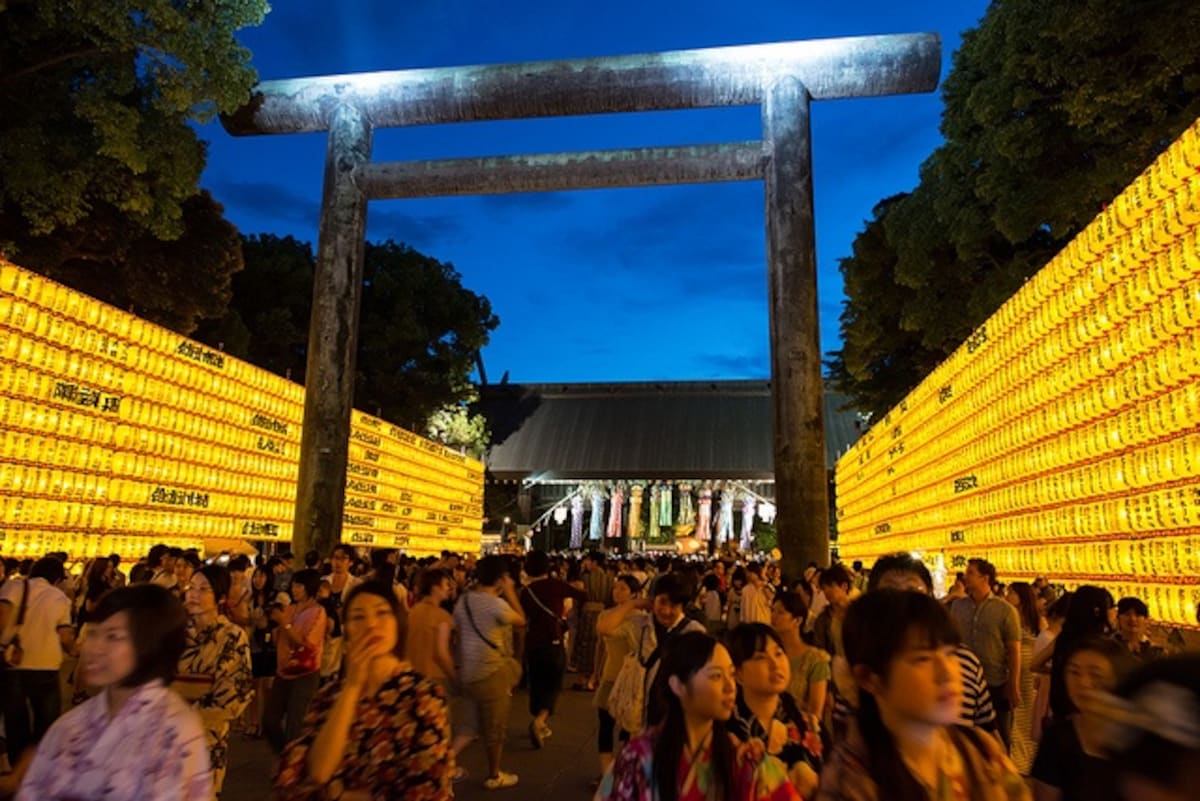
https://www.flickr.com/photos/pouchin/7574319312/
The Mitama Matsuri (みたままつり) is celebrated from July 13 to 16 at Yasukuni Shrine (靖国神社・Yasukuni Jinja) in central Tokyo. The entrance to the shrine is lined with 30,000 lanterns as a prelude to the Obon season, when it’s believed the spirits of people’s ancestors return to visit them. Other festival highlights include a mikoshi procession, and Awa-odori and Bon-odori dances.
Access: Yasukuni Shrine is about 10 minutes’ walk west of Kudanshita Station on the Toei Shinjuku Line, the Tokyo Metro Tozai Line and the Tokyo Metro Hanzomon Line. It’s also about 15 minutes’ walk east of Ichigaya Station on the JR Chuo-Sobu Line, the Toei Shinjuku Line and the Tokyo Metro Yurakucho and Namboku subway lines.
• Koenji Awa-Odori
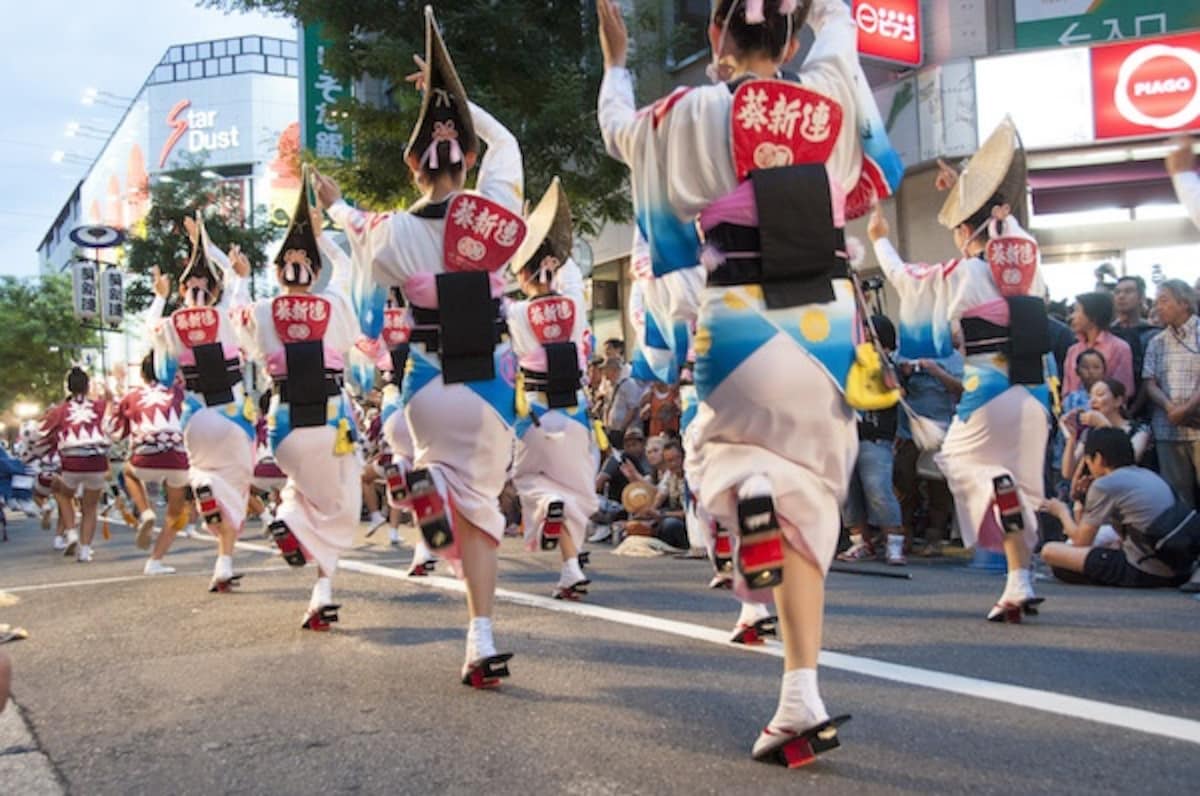
Awa-odori is a traditional dance from Tokushima on the island of Shikoku. The Tokyo Koenji Awa-Odori (東京高円寺阿波おどり) traces back to 1957, and features teams of over 10,000 brightly costumed dancers who draw more than 1 million spectators to the streets of Koenji on the last weekend of August each year.
Access: The action is centered around Koenji Station on the JR Chuo and Chuo-Sobu Lines. It can be accessed in about 20 minutes heading west from Shinjuku Station.
• Super Yosakoi
https://www.youtube.com/watch?v=mGOAhljf4WY
The Harajuku Omotesando Genki Matsuri Super Yosakaoi (原宿表参道元気祭スーパーよさこい) is a dance festival held in the Harajuku area on the last weekend of August. Super Yosakoi is a form of dance adapted from Awa-odori, featuring flashier costumes and more aggressive moves designed to appeal to young people. The dancers parade down Omotesando and in front of the NHK Broadcasting Center (NHK放送センター・NHK Hoso Center), and also perform on stages by Harajuku Station, in Meiji Shrine, and on the southern annex of Yoyogi Park (代々木公園・Yoyogi Koen).
Access: Harajuku Station is located between Shibuya and Shinjuku on the Yamanote Line. It’s adjacent to Meiji-jingumae Station on the Tokyo Metro Chiyoda and Fukutoshin Lines. Omotesando Station, at the top of the Omotesando slope, is on the Tokyo Metro Chiyoda, Hanzomon and Ginza Lines.
11. Tokyo Cultural Activities
https://www.youtube.com/watch?v=WNBBMXmnEqk
There’s an abundance of cultural activities to be enjoyed while visiting Tokyo:
• Head to the Kabukiza Theatre (歌舞伎座・Kabukiza) by Higashi-Ginza Station to see kabuki. Translation devices are available.
• See a performance by the incomparable Kodo taiko drumming group. Check their schedule for Tokyo events, which are usually held between June and August.
• Visit one of the Taiko-Lab studios in Asakusa or Aoyama to spend an hour learning traditional taiko drumming for yourself.
• Try a ninja training course.
• Take one of the many English cooking classes offered by locals. We particularly recommend Ayuko Akiyama's thoroughly educational (and delicious!) Buddha Bellies class.
Also be sure to check the latest schedule for workshops and performances prepared by Arts Council Tokyo. If you'd like a few more Tokyo cultural activity ideas, check out 16 Authentic "Japan" Experiences around Tokyo.
12. Tokyo Seasonal Attractions
Tokyo has a number of attractions that can only be seen at certain times of the year. These are the city's best seasonal events you don’t want to miss!
• Tokyo Sumo
There are six national sumo tournaments throughout the year, three of them held in Tokyo. Each tournament, or basho (場所), lasts two weeks, with the Tokyo events in mid-January, mid-May and mid-September. Sumo is a whole-day affair, and while it’s best to get tickets in advance, there's also a little-known way to land same-day tickets. The Tokyo basho are all held at Ryogoku Kokugikan beside Ryogoku Station.
• Tokyo Cherry Blossoms
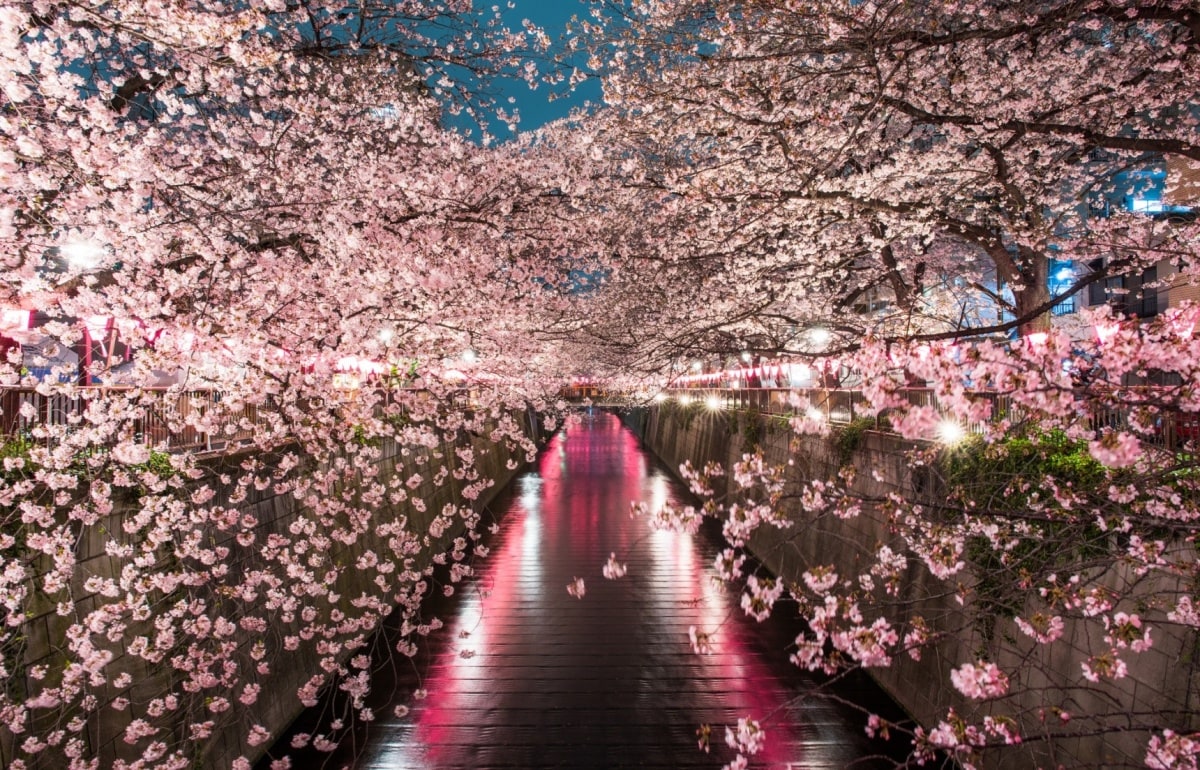
https://allabout-japan.com/en/article/5034/
In late March and early April, the entire city goes out to sit and drink beneath the blooming cherry trees in a tradition known as hanami (花見). While cherry trees, or sakura, can be found throughout the city, the best spots are Shinjuku Gyoen (新宿御苑) in Shinjuku (which doesn’t allow alcohol), Ueno Park, the river in Nakameguro (which is lined with bars), and Chidori-ga-fuchi along the northwest corner of the Tokyo Imperial Palace. The latter two are particularly spectacular at night.
Once they bloom, the blossoms only last about two weeks, so it’s important to track when they’re at their best.
• Tokyo Baseball
https://www.youtube.com/watch?v=B2h3ODiTvr4
Japanese baseball isn’t just worth seeing for the game—you need to see the fans, whose choreographed cheers and drumming are a spectacle in itself. The Yomiuri Giants play in Tokyo Dome (東京ドーム) just south of Korakuen Station. The season lasts from the end of March to the conclusion of the Japan Series in October or November. Many games sell out, so be sure to buy tickets well in advance!
• Tokyo Summer Fireworks
https://www.youtube.com/watch?v=oItfsYYHg04
Fireworks festivals, or hanabi taikai (花火大会), are a highlight of Japanese summer, almost making up for the sweltering heat as they light up the sky from July to August—though some are now even going as late as October!
Tokyo’s fireworks season kicks off on the third Saturday in July with the Adachi Fireworks (足立の花火・Adachi no Hanabi) near Kitasenju Station in northeastern Tokyo. The standout event, however, comes next weekend at the Sumida River Fireworks Festival (隅田川花火大会・Sumidagawa Hanabi Taikai), held in Asakusa on the last Saturday in July, with 20,000 fireworks going up into the sky.
Other big Tokyo fireworks events include the Edogawa Fireworks Festival (江戸川区花火大会・Edogawa-ku Hanabi Taikai), which is held on the first Saturday in August right on the border with Chiba Prefecture (accessible from Koiwa Station or Shinozaki Station); and the Itabashi Fireworks Festival (いたばし花火大会・Itabashi Hanabi Taikai), also held on the first Saturday in August, located near Ukima-Funado Station on the border between Tokyo and Saitama Prefecture.
For all fireworks events, be forewarned that the sheer volume of people will make getting back a very slow affair. It’s a good idea to snag a seat at a bar or restaurant and wait until the crowds die down before attempting to get into a station.
• Tokyo Autumn Leaves
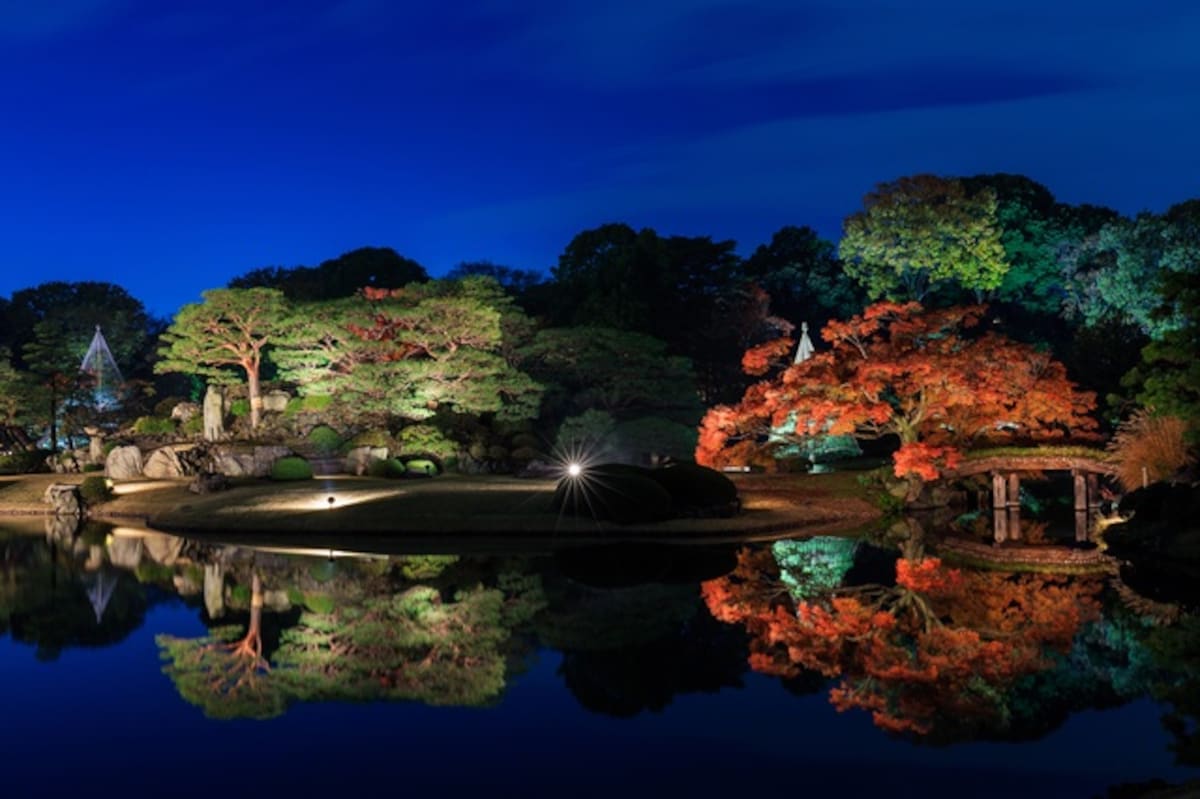
https://pixta.jp/tags/%E5%85%AD%E7%BE%A9%E5%9C%92%E3%80%80%E7%B4%85%E8%91%89?utf8=%E2%9C%93&page=1&sell_flat=1&rows=200&keyword=%E5%85%AD%E7%BE%A9%E5%9C%92%E3%80%80%E7%B4%85%E8%91%89&exclude=&search_type=0&showDetailOn=true&option%5Bis_japanese%5D=&option
In November and early December, Tokyo’s parks overflow with vibrant leaves in a display called koyo (紅葉). One of the best spots to catch koyo in the city is Rikugien (六義園), a traditional garden just south of Komagome Station in northeastern Tokyo, which is absolutely magical at night.
Other key autumn color sites include Koishikawa Korakuen (小石川後楽園), located south of Korakuen Station in central Tokyo; Meijijingu Gaien (明治神宮外苑), south of Shinanomachi Station in central Tokyo; and Showa Kinen Park (国営昭和記念公園・Koku-ei Showa Kinen Koen), in Tachikawa on Tokyo’s western end.
If you want to get completely away from the city streets, you can also take the Chuo Line or Keio Line all the way out to Mount Takao (高尾山・Takao-san) on Tokyo’s western edge, where you can even see Mount Fuji on a clear day.
• Tokyo Christmas Markets
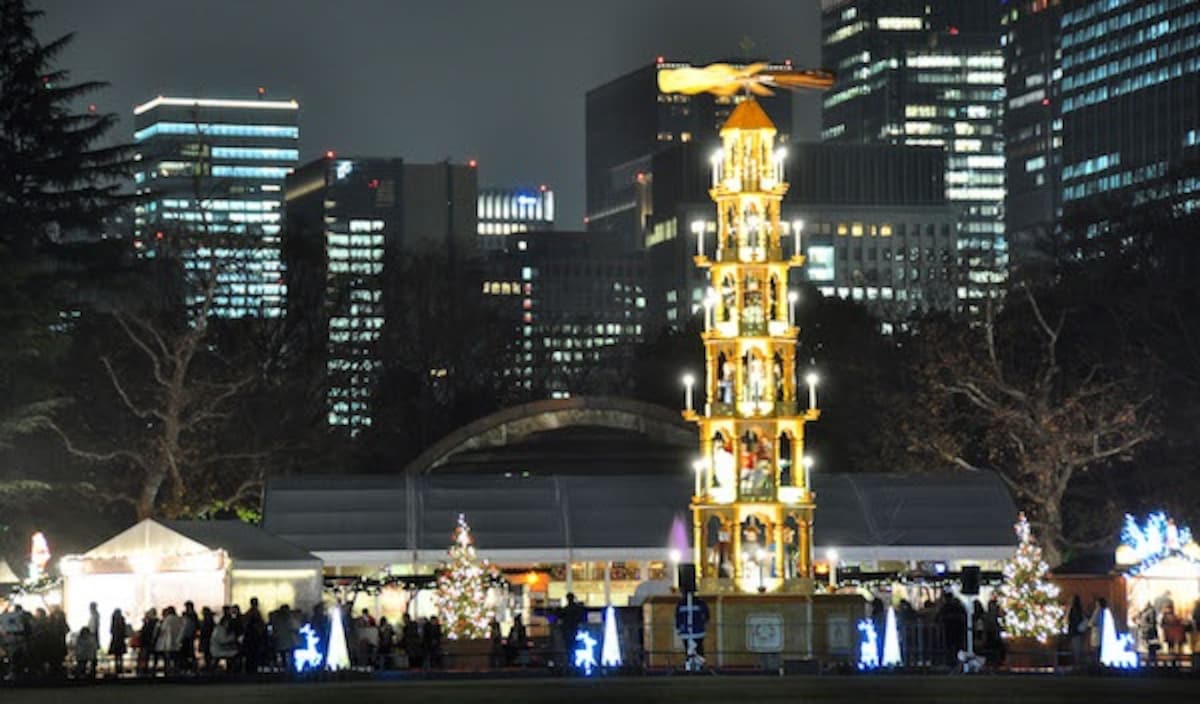
In recent years, Christmas markets have been popping up around Tokyo in mid-December, offering German-style confections, beer, music and mulled wine. The best is Hibiya Park’s Tokyo Christmas Market (東京クリスマスマーケット), which imports a Christmas pyramid from Dresden each year, and can be found right outside Hibiya Station or Kasumigaseki Station in eastern Tokyo.
The Roppongi Hills Christmas Market is also quite nice, located in Oyane Plaza (大屋根プラザ) at the foot of Mori Tower, while the similarly compact Solamachi Christmas Market can be found beneath Tokyo Skytree.
If you’re willing to go further afield, there’s a delightful Christmas Market at Yokohama Red Brick Warehouse, accessible from Sakuragicho Station in Kanagawa Prefecture, about an hour south of Shinjuku.
• New Year’s in Tokyo
https://www.youtube.com/watch?v=b4f5YqiG1eY
New Year’s is the biggest event of the year on the Japanese calendar, with many people engaging in hatsumode (初詣で), their first temple or shrine visit of the year, right after the clock strikes midnight. To join in the celebrations, head out to any major temple or shrine to catch huge crowds counting down to the New Year, then wait in line to pay your respects at the main hall.
The most popular options are Asakusa Shrine on the grounds of Senso-ji Temple and Meiji Shrine in Harajuku. A particularly nice option is Zozo-ji Temple (増上寺・Zozo-ji), which offers a brilliant view of Tokyo Tower at it joins in the countdown.
Hidden Spots in Tokyo
Tokyo's charms go well beyond the obvious. Here are a few lesser-known spots that can offer a bit of delight off the more beaten path.
• Shinjuku Drinking Holes
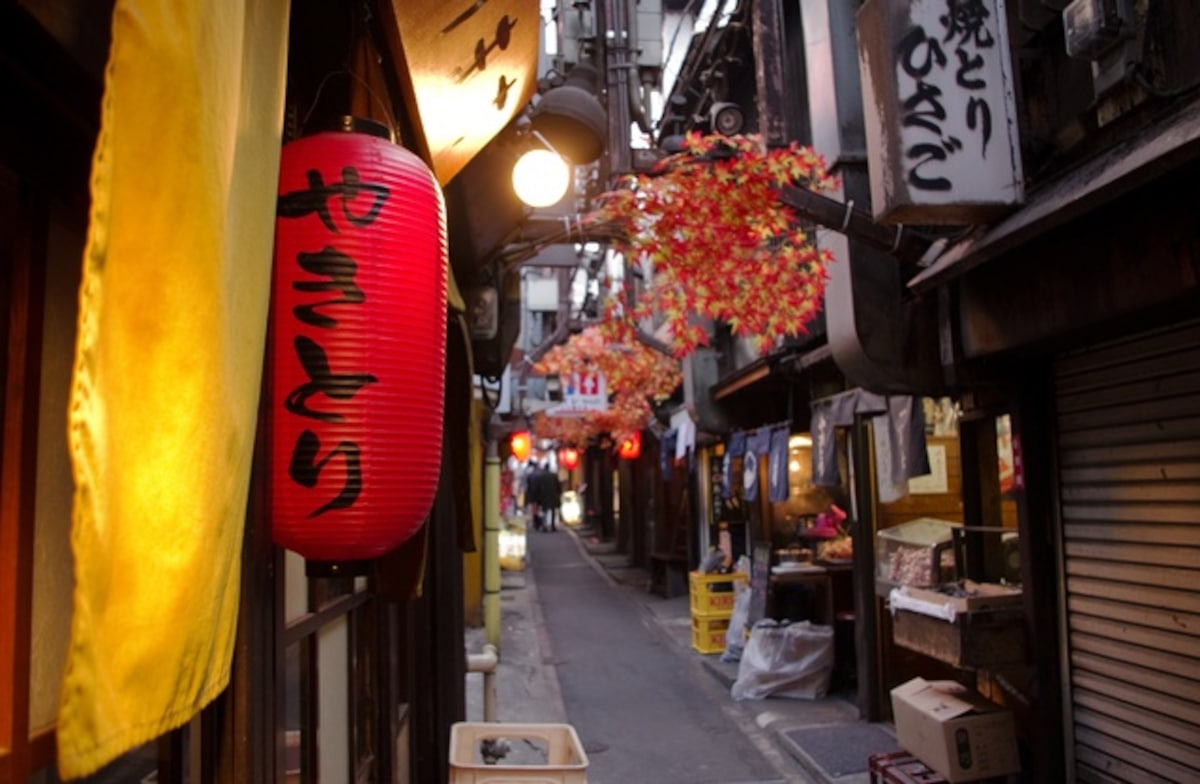
Among all its restaurants, retail stores and karaoke parlors, the Shinjuku Station area also offers a healthy selection of old-school drinking. Located just north of the station’s west exit, Omoide Yokocho (思い出横丁, literally "Memory Lane") is a single junction of narrow alleys lined with tiny old drinking holes and yakitori (chicken skewer) shops. You won’t likely be able to read any menus here, but if you can say “beer” and “edamame,” you’re good to go. Where available, it's fun to climb up to rooftop seating for a real shanty-town feel.
If you’d like more of the same, head northeast of the station to Shinjuku Golden Gai (新宿ゴールデン街) for six similar alleys. On the other hand, if you're looking for a different kind of social environment, you can head further east and south to Shinjuku Ni-chome to find Tokyo's hopping gay bar district.
Access: Nearly all of Tokyo’s biggest train lines intersect at Shinjuku Station. Just be sure to check the closest exit to your destination, or you could end up very lost.
• Shibamata
Shibamata (柴又) is a laid-back, retro neighborhood pressed against Tokyo’s eastern edge. Right outside Shibamata Station you’ll find a statue of Tora-san, the struggling peddler from Otoko wa Tsurai yo (It’s Tough Being a Man), a comedy movie series that boasts a record-setting 48 installments between 1969 and 1995.
At the end of the quaint shopping street you’ll find Shibamata Taishakuten Temple (柴又帝釈天・Shibamata Taishakuten), which features some remarkably ornate carvings by the same artists who contributed to the opulent Nikko Tosho-gu in Tochigi Prefecture.
Further toward the Edogawa River stands Yamamoto-tei (山本亭), a former merchant’s residence featuring a unique early-20th-century mix of Japanese and Western design, including a tasteful garden and tea room. And if it’s your thing, you’ll also find the Katsushika Shibamata Tora-san Museum (葛飾柴又寅さん記念館・Katsushika Shibamata Tora-san Kinenkan) just to the south.
To finish up, you can make your way to the broad banks of the Edogawa River, where you can take a pleasant trip to the other side and back on a traditional boat, a crossing called Tagiri no Watashi (矢切の渡し).
Acccess: From Nippori Station on the Yamanote Line, take the Keisei Main Line to Keisei-Takasago Station and change to the Keisei Kanamachi Line. Shibamata Station is the next stop.
• More Hidden Tokyo Attractions
https://allabout-japan.com/en/article/4749/
Other (somewhat) less-traveled Tokyo attractions include:
• JAL Sky Museum (JAL工場見学 Sky Museum・JAL Kojo Kengaku Sky Museum), where you can visit an operating airline hanger and practice waving in planes (accessible from Shin-Seibijo Station on the Tokyo Monorail).
• Sengaku-ji Temple (泉岳寺・Sengaku-ji), where the graves of the legendary 47 Ronin can be found (head to Sengakuji Station in south-central Tokyo).
• The hipster-style shopping streets and restaurants of Shimokitazawa (head west from Shinjuku or Shibuya to Shimokitazawa Station).
• The life-sized Gundam statue in Odaiba (お台場), an artificial island in Tokyo Bay (head to Daiba Station or Tokyo Teleport Station).
• Gotoku-ji Temple (豪徳寺・Gotoku-ji), reputedly the origin of the Maneki Neko, the ubiquitous beckoning storefront cat (head to Gotokuji Station in western Tokyo).
• VR Zone Shinjuku, where you can put on a VR helmet and fire Dragon Ball Z energy blasts or rampage through Tokyo-3 as the pilot of a giant Eva unit (walk 5 minutes north of Shinjuku Station).
Top 5 Must-Eats in Tokyo
With the world's most Michelin-starred restaurants coupled with a plethora of cheap food options, you’ll never go hungry in Tokyo. While you can find a decent meal almost anywhere, if you’re looking for the big standout dining spots for tourists, these are the five best spots to chow down.
1. Robot Restaurant
https://www.youtube.com/watch?v=rLFaNX4WkZ0&t=49s
Robot Restaurant combines every possible hypermodern Japan cliché and serves it up with a dinner course. Since opening in 2012, this over-the-top, girls-and-robots dinner show has become a standard stop for international tourists, wowing (and bemusing) visitors with its glaring neon lights, techno music and taiko drumming. The food is, to be honest, entirely secondary; reservations required.
Access: The Robot Restaurant is about 10 minutes’ walk northeast from Shinjuku Station’s East Exit.
2. Tsukishima 'Monjayaki'
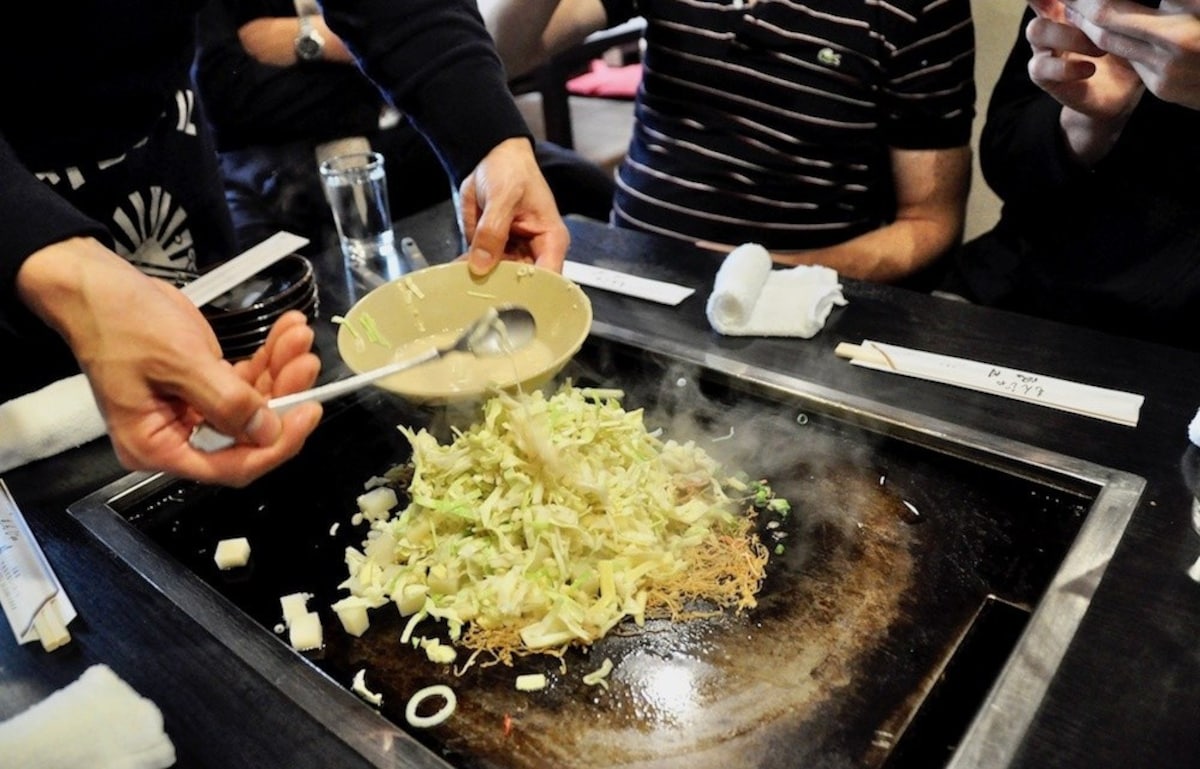
https://allabout-japan.com/en/article/6154/
Monjayaki (もんじゃ焼き) is the runny, inside-out Tokyo variant of the okonomiyaki savory pancake. Over 100 monjayaki restaurants can be found on Tsukishima (月島), a reclaimed island just across the channel from Tsukiji fish market. The most famous restaurant in the area is Iroha (いろは), but any eatery will do. Many ingredient options are available, but whatever you get, we strongly recommend adding cheese and mochi (soft rice cake) to the mix!
Access: Tsukishima Station is accessible on the Tokyo Metro Yurakucho Line and the Toei Oedo Line. Take Exit 7 from Tsukishima Station to emerge right on Tsukishima Nishinaka-dori (月島西仲通り), better known as Tsukishima Monja Street (月島もんじゃストリート), then start walking southwest and take your pick.
3. Michelin-Starred Ramen
If you’re in Tokyo, you’re going to eat ramen, so you might as well eat the best.
• Japanese Soba Noodle Tsuta
https://www.youtube.com/watch?time_continue=6&v=XfvKbGCxULM
In 2016, Japanese Soba Noodle Tsuta (蔦) became the first ramen shop to ever be awarded a Michelin star, making it the city’s hottest noodle commodity.
• Nakiryu
https://www.youtube.com/watch?v=9gW8A98AafI
Then, in 2017, nearby Nakiryu (鳴龍) was given a star, so there are now two Michelin-starred ramen shops to choose from in the northern Tokyo area. Just be ready to line up!
Access: Tsuta is a 2-minute walk south from Sugamo Station on the JR Yamanote Line. Nakiryu is a five-minute walk southeast of Otsuka Station, which is one stop to the west on the same line.
4. Sukiyabashi Jiro (すきやばし次郎)
https://www.youtube.com/watch?v=G2edsT-HCjE
If you’re willing to spend a pretty penny on your raw fish, Sukiyabashi Jiro is the place to do it. The subject of the acclaimed documentary Jiro Dreams of Sushi, you only have a chance of getting into this two-Michelin-star sushi shop if you book well in advance. Just drop ¥30,000 (about US$270) and let the chef serve you freely in the omakase course—the standard procedure at a high-end sushi bar. President Barack Obama ate here with Prime Minister Shinzo Abe in 2014.
Access: This small sushi bar is found in the basement of the Tsukamoto Sogyo (塚本總業) building, which is directly connected to Exit C6 and B10 of Ginza Station, accessible via the Tokyo Metro Hibiya and Marunouchi subway lines.
5. Gonpachi Nishiazabu (権八 西麻布)
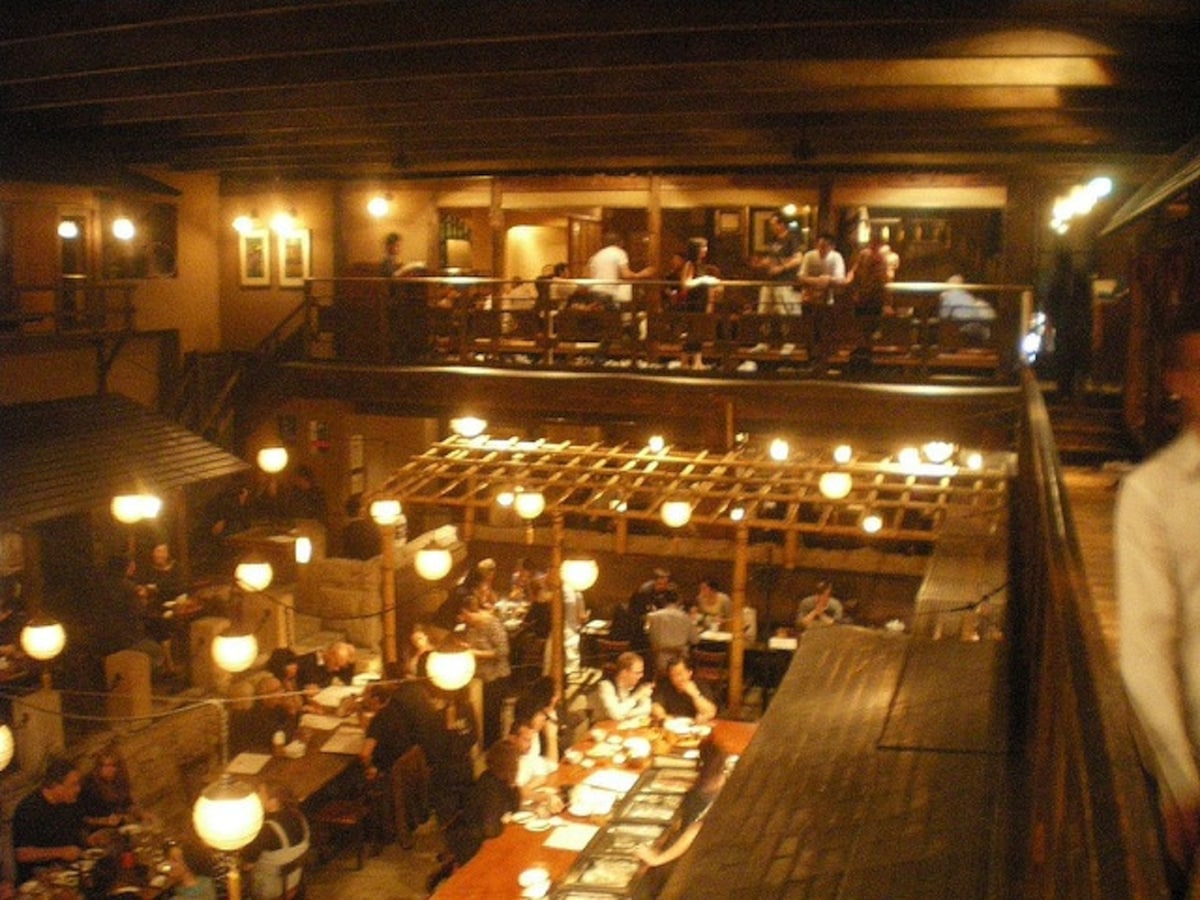
https://www.flickr.com/photos/msnaut/1466595484/
Gonpachi is a hotspot for tourists because it’s the restaurant that inspired the House of Blue Leaves, site of the epic Crazy 88 fight in Kill Bill. Known among overseas visitors as the “Kill Bill restaurant,” the food has been largely adapted to the foreign palate, so it’s a little less authentic than your typical Japanese-style pub (izakaya)—and a little pricier, though the staff’s familiarity with English is a bonus.
Access: Walk 10 minutes west from Roppongi Station (Tokyo Metro Hibiya Line or Toei Oedo Line), or take Bus 01 east from Shibuya Station (if you want to walk, it’s 30 minutes).
How to Get around Tokyo
Home to the three busiest train stations in the world, Tokyo is crisscrossed by a staggering 84 train lines and 13 subway lines. In addition, buses run along most major streets, (expensive) taxis can be found at major and mid-sized stations, and ferry services run out to the Tokyo Islands.
https://www.youtube.com/watch?v=qaXnlYPMKhw
It’s easiest to navigate Tokyo transit with a Suica card, which can be purchased at any ticket machine for a ¥500 deposit, plus the amount of fare you'd like to load on. The card can be used across all Tokyo transit lines except the bullet train, and is valid for buses and many (but not all) areas outside of Tokyo as well. You need to tap your card both when you enter and when you exit (and if you buy physical tickets, they must be inserted into the gate upon entry, retrieved, then re-inserted upon exit—so don’t lose them!).
Various one-day and multi-day passes are available for Tokyo transit, but their usefulness will depend on exactly where you plan to travel and which lines you need to take—and whether you already have a JR Pass. Note also that a JR Pass will only work on JR lines, not the subway or private lines (i.e., the Tobu Line, the Seibu Line, etc.).
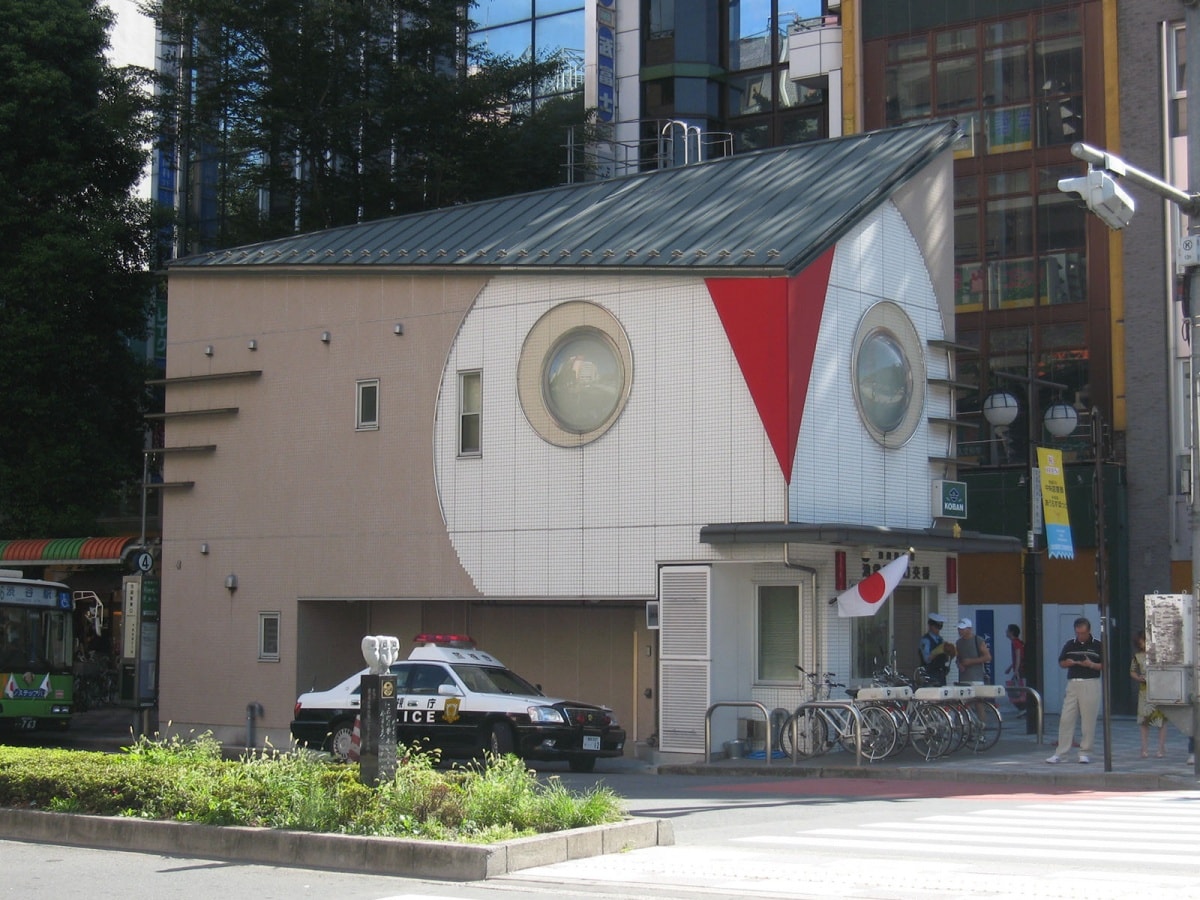
https://ja.wikipedia.org/wiki/%E4%BA%A4%E7%95%AA
Since there are almost always multiple ways to reach a destination, the best way to plan any Tokyo route is using Google Maps. Input the name of your destination and Google will indicate the ideal route, transfer points, travel time and total fare. Google even takes into account how much time it takes to transfer at each station, which is important for catching timely Tokyo trains.
One caveat, however, is that some destination names are not understood in English. Inputting an English address tends to give a result that's off by 100 meters (109 yds) or more, so if the English name isn't working, first try copying and pasting the Japanese name. If that fails, try the Japanese address, which will work in all cases. Another alternative is to try Apple Maps as a backup, which sometimes recognizes English names that Google does not.
If you’re truly lost, the best sources of directions are station staff and police boxes (交番・koban), the latter of which can be found on corners throughout the city. Believe it or not, the cops are usually quite happy to offer directions!
How to Get to Tokyo
Tokyo is the nexus of Japan's transportation network. The metropolis can be accessed in countless ways by air, ground and sea. The method you use just depends on where you're coming from, how much you want to spend, how much time you have, and the kind of travel experience you most enjoy!
• Getting to Tokyo by Plane
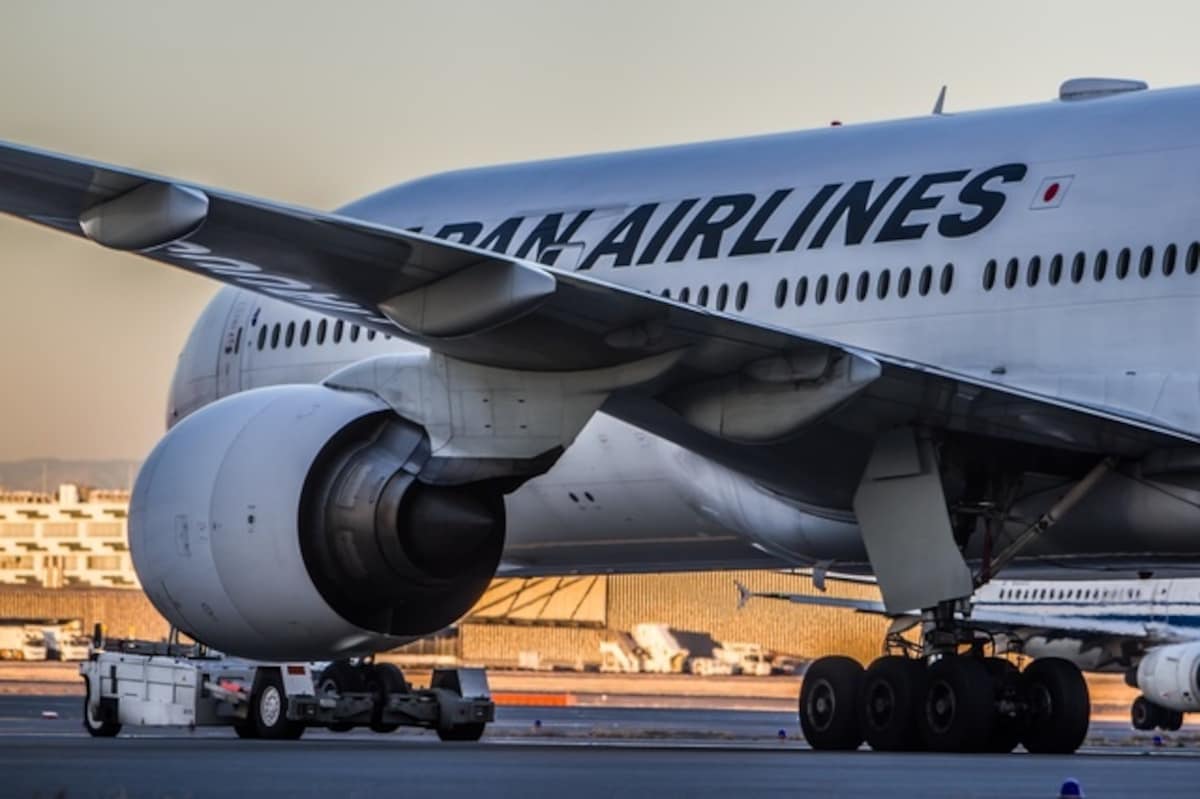
https://pixta.jp/tags/JAL%20%E9%A3%9B%E8%A1%8C%E6%A9%9F?utf8=%E2%9C%93&sell_flat=1&rows=200&keyword=JAL+%E9%A3%9B%E8%A1%8C%E6%A9%9F&exclude=&search_type=0&showDetailOn=true&option%5Bis_japanese%5D=&option%5Bshape%5D%5B%5D=&option%5Bmodel_release_only%5D=&
JAL and ANA are the two major domestic carriers, with Jetstar the major budget line.
While the train system is usually adequate for any starting point on Honshu (Japan’s main island), you’ll want to fly from anywhere in Hokkaido, Kyushu, and—if you’re not making any intermediate stops—Shikoku. By plane, Tokyo is 90 minutes from Sapporo (Hokkaido), 100 minutes from Matsuyama (Shikoku), 2 hours from Fukuoka (Kyushu), and 2.5 hours from Naha (Okinawa).
• Getting to Tokyo by Train
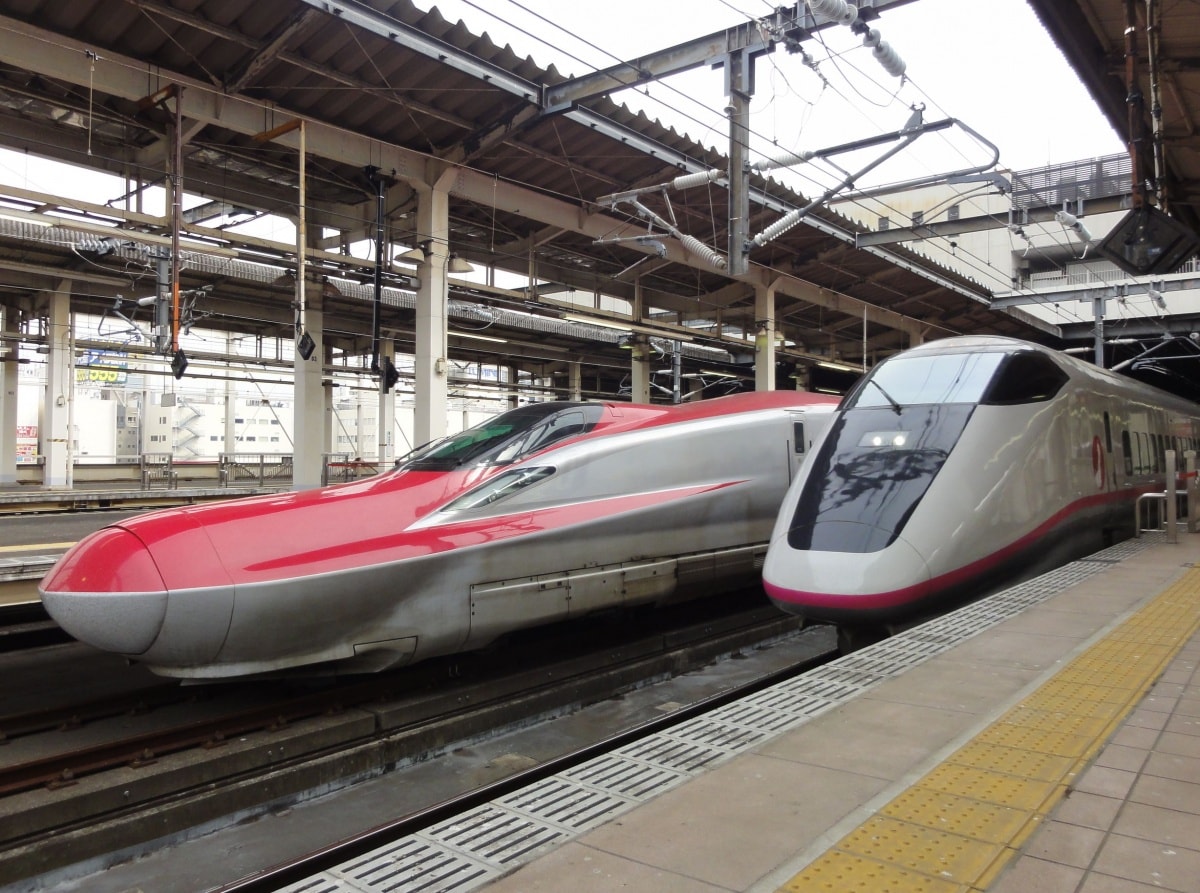
https://en.wikipedia.org/wiki/Shinkansen
Japan's extensive Shinkansen (bullet train) network connects Tokyo to nearly all of the nation's major cities. There are different Shinkansen lines going north, south and west of Tokyo, each with a different naming system to distinguish between their regular trains and express trains that make less stops.
From the south, if you take a "Nozomi," which makes the least stops, Tokyo is 2 hours 20 minutes from Kyoto, 2 hours 30 minutes from Osaka, 4 hours from Hiroshima, and 5 hours from Hakata Station in Fukuoka. If you're coming from Kagoshima, the southernmost point on the Kyushu Shinkansen system, tack on a further 90 minutes to get up to Hakata.
Coming from northern Japan on a "Hayabusa," Tokyo is 90 minutes from Sendai, 3 hours 20 minutes from Aomori, and 4 hours 15 minutes from Hakodate in Hokkaido, the northernmost point on the Shinkansen network.
Coming from the Sea of Japan side, Tokyo is 2 hours 35 minutes from Kanazawa if you catch a "Kagayaki."
• Getting to Tokyo by Bus
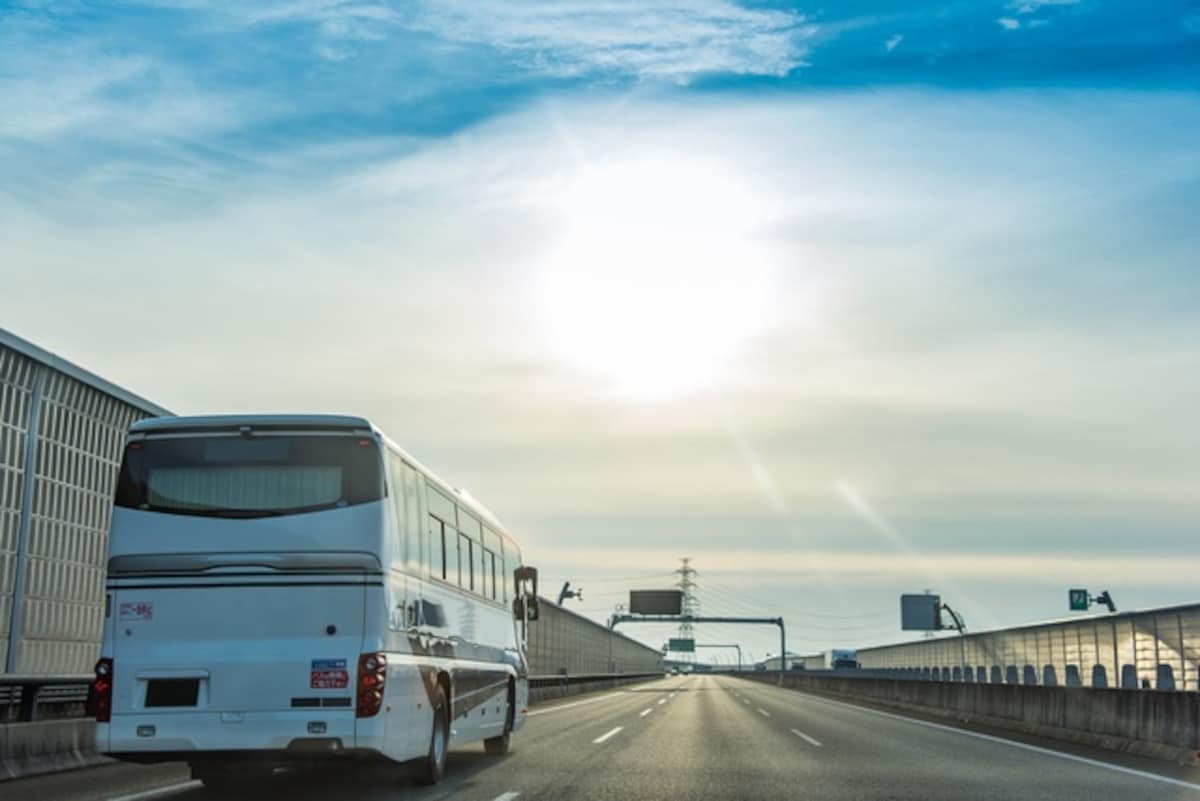
https://pixta.jp/tags/%E9%AB%98%E9%80%9F%E3%83%90%E3%82%B9?utf8=%E2%9C%93&sell_flat=1&rows=200&keyword=%E9%AB%98%E9%80%9F%E3%83%90%E3%82%B9&exclude=&search_type=0&showDetailOn=true&option%5Bis_japanese%5D=&option%5Bshape%5D%5B%5D=&option%5Bmodel_release_o
There are a number of bus services between Tokyo and other major cities, offering a cheaper option than rail or airfare. For overseas tourists, Willer is the major operator, and you can find a collection of additional options through Japan Bus Lines.
It’s about 9 hours from Kyoto to Tokyo, and 10 hours from Osaka to Tokyo, typically by night bus. It’s about 6 hours from Sendai to Tokyo.
• Getting to Tokyo by Boat
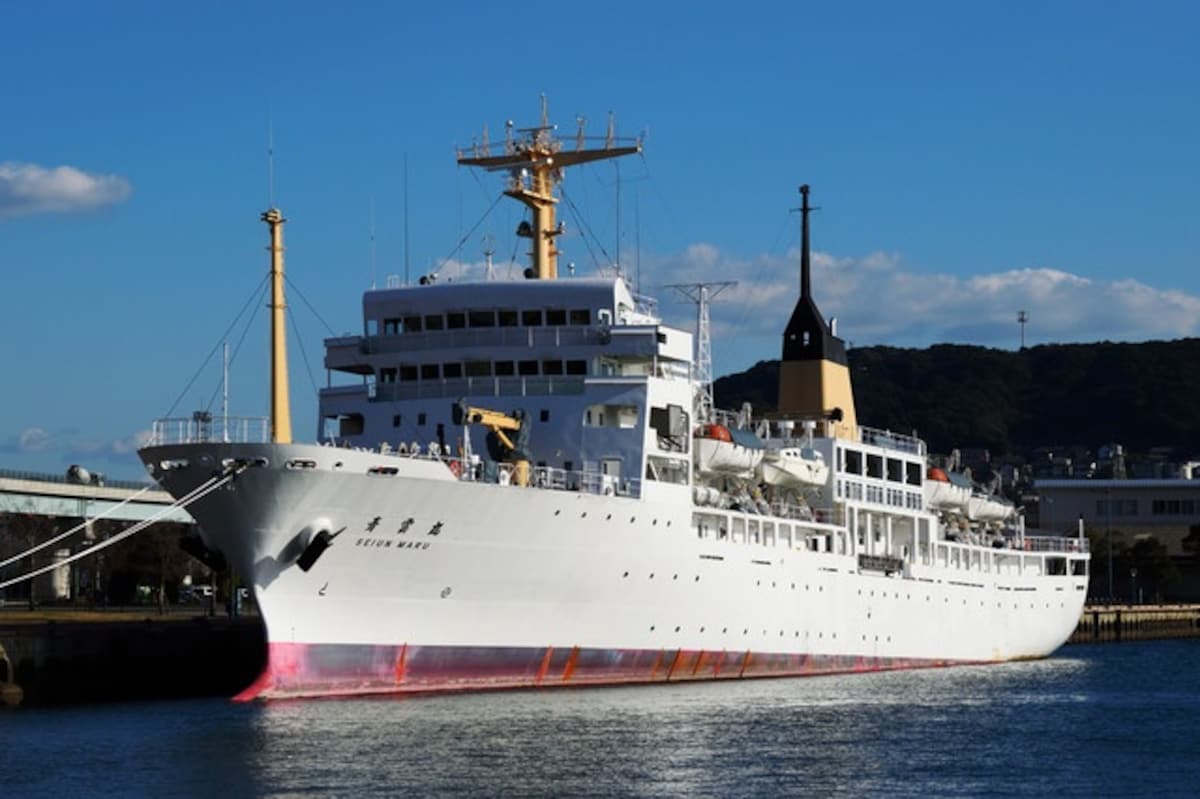
https://pixta.jp/tags/%E6%9D%B1%E4%BA%AC%E3%83%95%E3%82%A7%E3%83%AA%E3%83%BC?utf8=%E2%9C%93&page=1&sell_flat=1&rows=200&keyword=%E6%9D%B1%E4%BA%AC%E3%83%95%E3%82%A7%E3%83%AA%E3%83%BC&exclude=&search_type=0&showDetailOn=true&option%5Bis_japanese%5D=&option
The only direct access to Tokyo by ferry from another major city comes from Tokushima in Shikoku, which also goes on to connect to Kitakyushu. The boat journey takes 14 hours 30 minutes from Kitakyushu to Tokushima, and a further 18 hours from Tokushima to Tokyo.
Tokyo is also connected by ferry to a number of islands that are administered as part of the metropolis. Among the Tokyo Islands, Izu Oshima is 1 hour 45 minutes from Tokyo by high-speed ferry, or 4 hours 20 minutes by regular ferry. Popular surf spot Niijima is about 2 hours 30 minutes from Tokyo by high-speed ferry, and 6 hours 45 minutes by regular ferry. About 1,000 kilometers (621 mi) south of Tokyo, the UNESCO-protected Ogasawara Islands are an epic 24-hour ferry ride away.
Tokyo Local Tips
If you’d like to navigate Tokyo like a local, there are a few tips and tricks that can help you get an edge.
• Tokyo Airport Tips
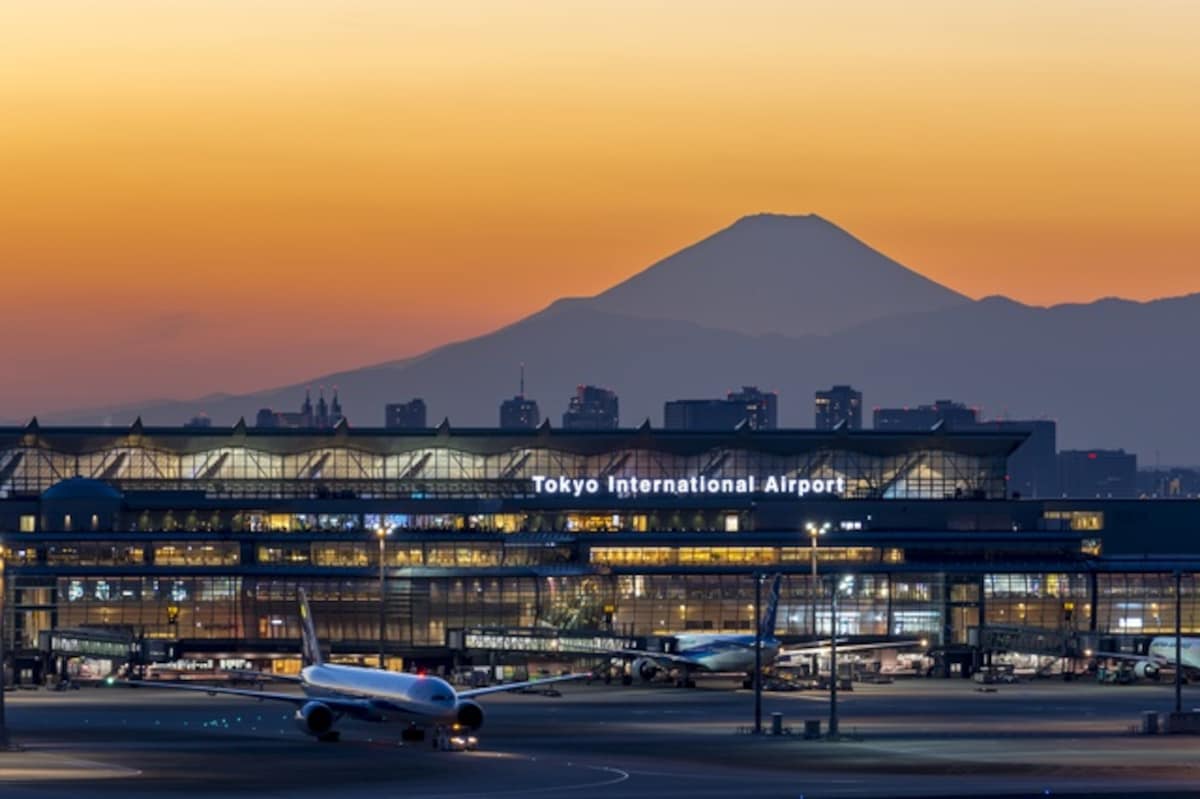
https://pixta.jp/tags/%E7%BE%BD%E7%94%B0%E7%A9%BA%E6%B8%AF?utf8=%E2%9C%93&page=1&sell_flat=1&rows=200&keyword=%E7%BE%BD%E7%94%B0%E7%A9%BA%E6%B8%AF&exclude=&search_type=0&showDetailOn=true&option%5Bis_japanese%5D=&option%5Bshape%5D%5B%5D=&option%5Bmodel_re
When flying into Tokyo, try to use Haneda Airport (technically Tokyo International Airport: 東京国際空港・Tokyo Kokusai Kuko). It’s much closer to Tokyo city center, and a much cheaper and more pleasant trip than the long slog from Narita International Airport (成田国際空港).
While you can take the Keikyu Line in from Haneda, you’ll probably want to use the Tokyo Monorail, since it’s covered by the JR Pass (assuming you have one). If you do have to use Narita Airport, only take the Narita Express if you have the JR Pass—if you don’t have the pass, take the Keisei Electric Railway Skyliner, which is much cheaper and actually a nicer train. You can also take local trains from Narita, but they take forever, and you’ll have to navigate more transfers.
• How to Navigate Tokyo Station Exits
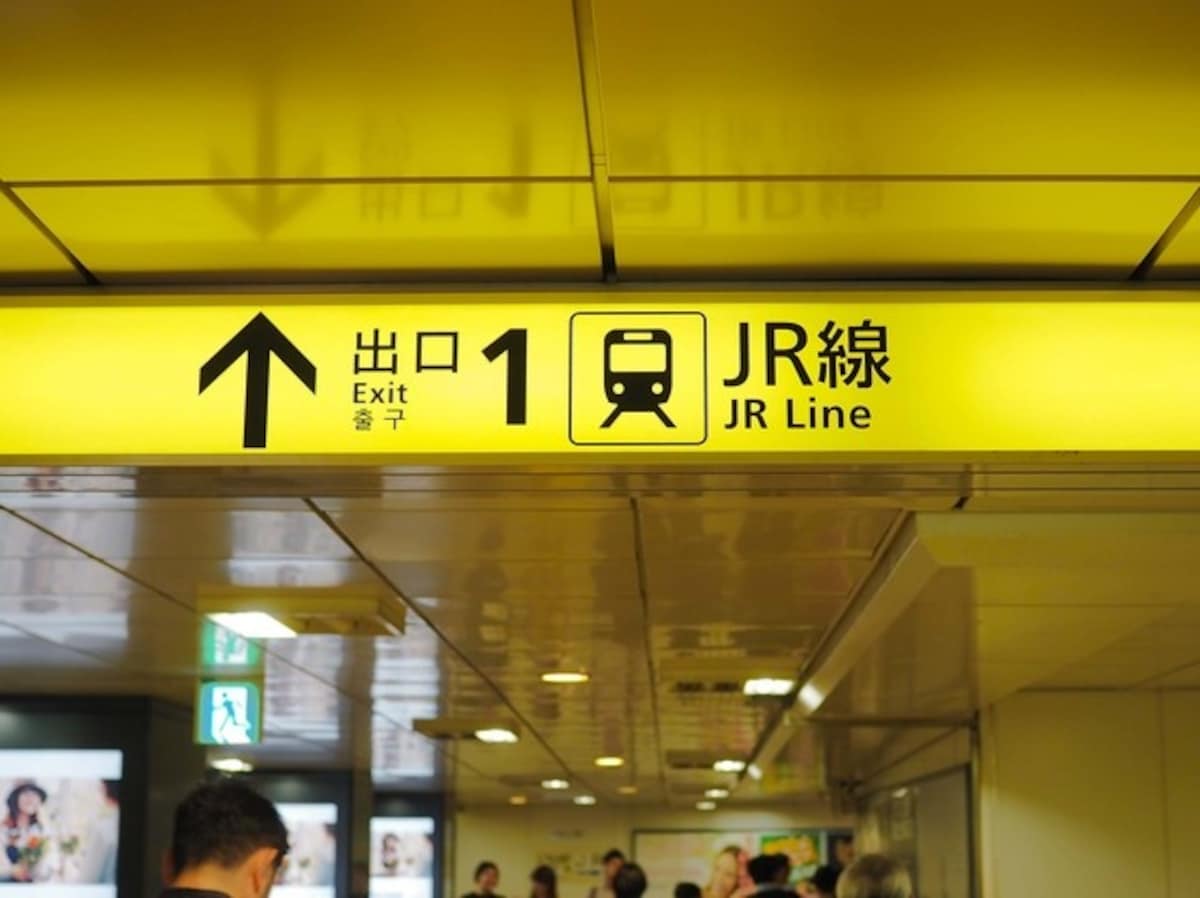
https://pixta.jp/tags/%E9%A7%85%20%E5%87%BA%E5%8F%A3?utf8=%E2%9C%93&page=1&sell_flat=1&rows=200&keyword=%E9%A7%85+%E5%87%BA%E5%8F%A3&exclude=&search_type=0&showDetailOn=true&option%5Bis_japanese%5D=&option%5Bshape%5D%5B%5D=&option%5Bmodel_release_only%5D=
When you look up a destination station in Tokyo, always check which exit you need before getting on the train. Major stations like Tokyo and Shinjuku have dozens upon dozens of exits attached to vast underground networks, and taking the wrong exit could leave you both disoriented and as much as a kilometer (0.6 mi) away from your goal. Zoom in on your Google Map to see the exit number.
• How to Eat Cheap in Tokyo
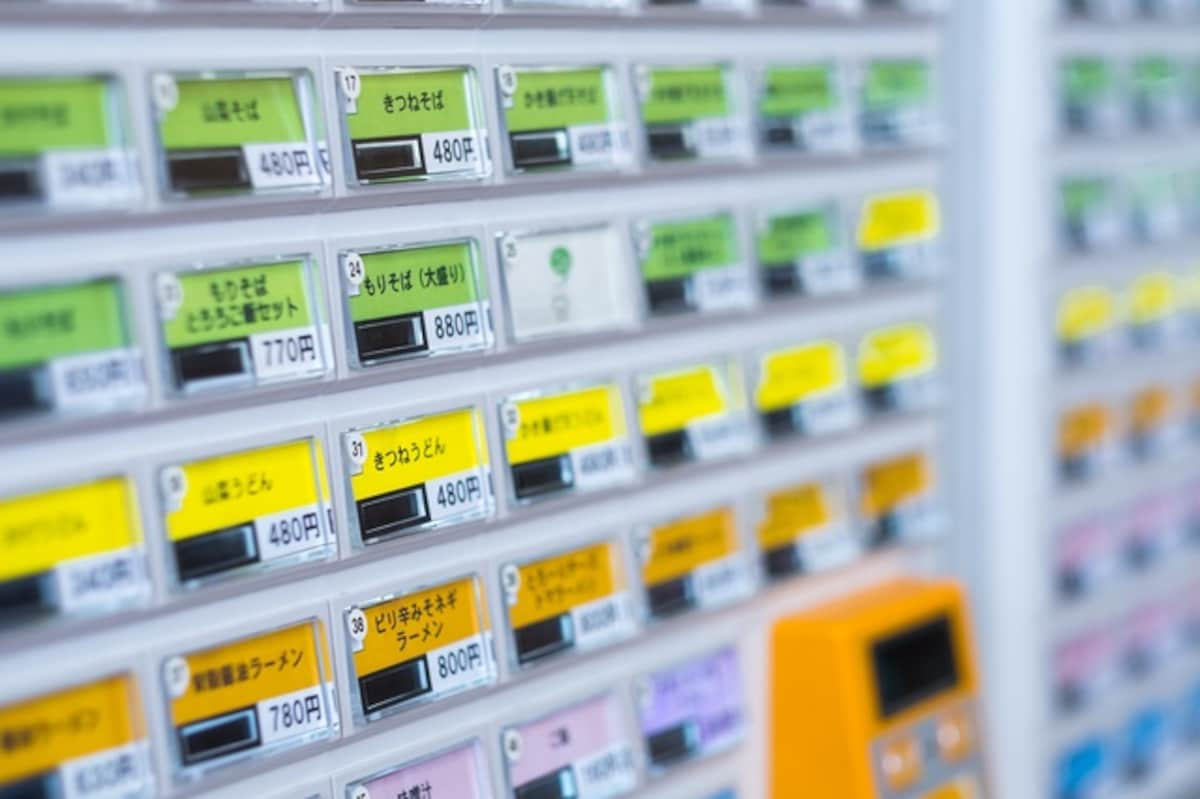
https://pixta.jp/tags/%E3%83%A9%E3%83%BC%E3%83%A1%E3%83%B3%E8%B2%A9%E5%A3%B2%E6%A9%9F?utf8=%E2%9C%93&page=1&sell_flat=1&rows=200&keyword=%E3%83%A9%E3%83%BC%E3%83%A1%E3%83%B3%E8%B2%A9%E5%A3%B2%E6%A9%9F&exclude=&search_type=0&showDetailOn=true&option%5Bis_j
There’s no need to spend a lot of money to eat in Tokyo. Local fast food like ramen and gyudon (beef bowls), as well as gyoza Chinese dumplings, will usually come in at less than ¥500—just be aware that in these small, counter-style shops you typically need to buy a ticket from the machine at the door and then present it at the counter to make a purchase. The machines usually don't have any pictures, so this can be a bit tricky if you can't read any Japanese and you're too embarrassed to ask for help.
So-called “family restaurants” like Gusto (ガスト) and Saizeriya (サイゼリヤ) offer simple meals with pictographic menus 24 hours a day. And if you’re in a pinch, Tokyo’s ubiquitous, 24-hour convenience stores (コンビニ・konbini) offer decent food that you can ask the staff to heat up for you.
• Etiquette in Tokyo
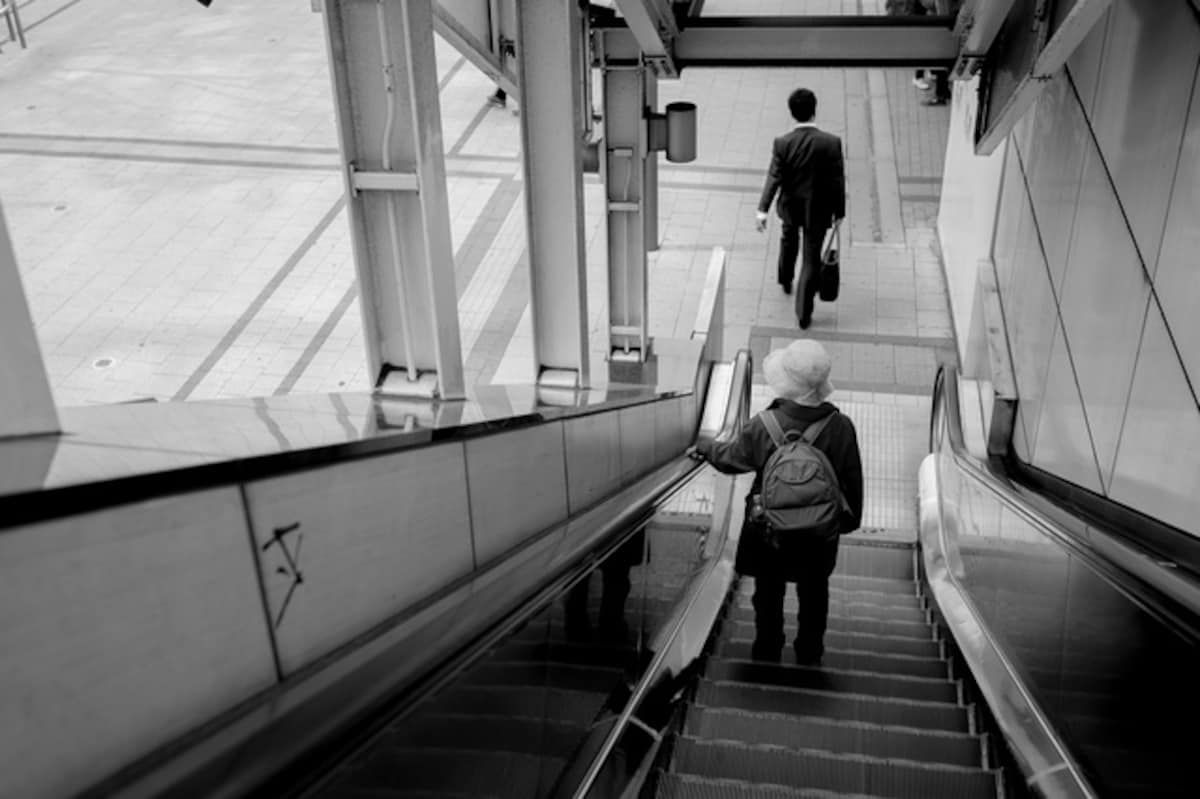
https://pixta.jp/tags/%E6%96%B0%E5%AE%BF%E3%80%80%E3%82%A8%E3%82%B9%E3%82%AB%E3%83%AC%E3%83%BC%E3%82%BF%E3%83%BC?utf8=%E2%9C%93&page=1&sell_flat=1&rows=200&keyword=%E6%96%B0%E5%AE%BF%E3%80%80%E3%82%A8%E3%82%B9%E3%82%AB%E3%83%AC%E3%83%BC%E3%82%BF%E3%83%BC&
Following the simple tips below will help you stay on people's good side while you travel around Tokyo:
• Don’t talk on the phone—or talk too loudly—while on the train.
• Don’t smoke outside anywhere but a designated area (so don’t smoke and walk).
• People in Tokyo stand on the left side of the escalator and walk on the right.
We hope that’s enough to help you get the most out of your trip to Tokyo! If you’re looking for more general Japan travel tips, please also check out 11 Things to Know when Traveling to Japan.


